Essential Munich First Timers Guide: book the best day trips from Munich and focus on city sightseeing. Munich gives visitors a total Bavarian experience!
Of all the places to visit in Germany, first time visitors to Munich might feel they made the best choice. Day trips from Munich offer scenic and historic places to visit in Bavaria, and Munich itself is considered one of the best cities to visit in Germany.
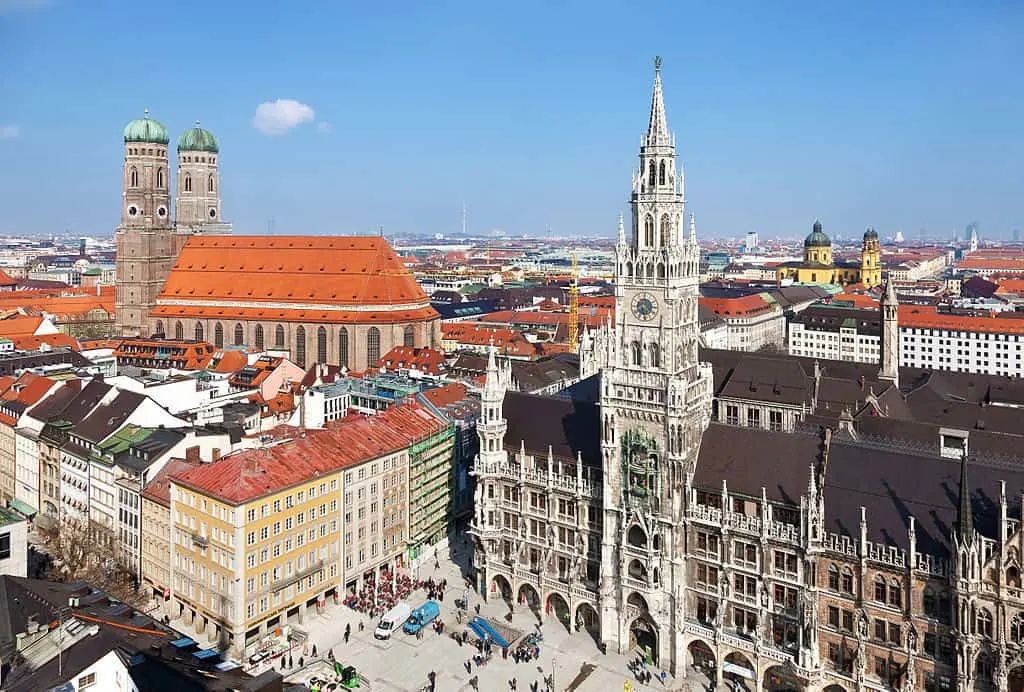
Because Munich is one of my favorite places to go in Germany, I wanted to bring you a comprehensive Munich First Timers Guide. Munich tourist information is widely available, but it’s helpful to have insider information from folks who visit Munich frequently and have spent a fair amount of time there, as I have.

To round out my own recommendations and tips for visitors to Munich, I consulted fellow travel bloggers whose contributions appear in this post. I hope you find this Munich city guide helpful. When you’re planning your trip to Munich, please don’t hesitate to let me know if I can help!
Table of Contents
Get this Munich Guide in Kindle or Paperback
Note: If you’d prefer this information in e-book or regular book format, check out my paperback Munich guide or our Kindle Munich guide.
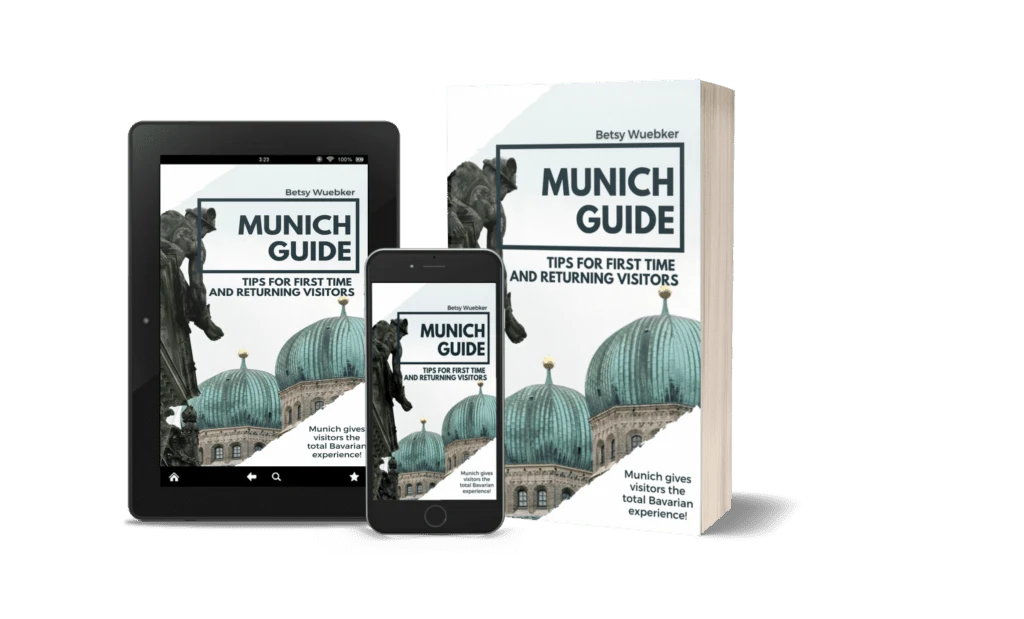
This post contains affiliate links and/or references to our advertisers. We may receive compensation when you click on or make a purchase using these links.
Travel to Munich Germany to Get a Sense of Bavarian Heritage
Where is Munich located? Fortunately, Munich’s location makes it convenient for travelers. It is easily reached by land or air from other parts of Europe and Germany. As well, direct flights to Munich from the United States are plentiful. Travel tips resources routinely mention that from Munich, landmarks on many a bucket list are easily reached.
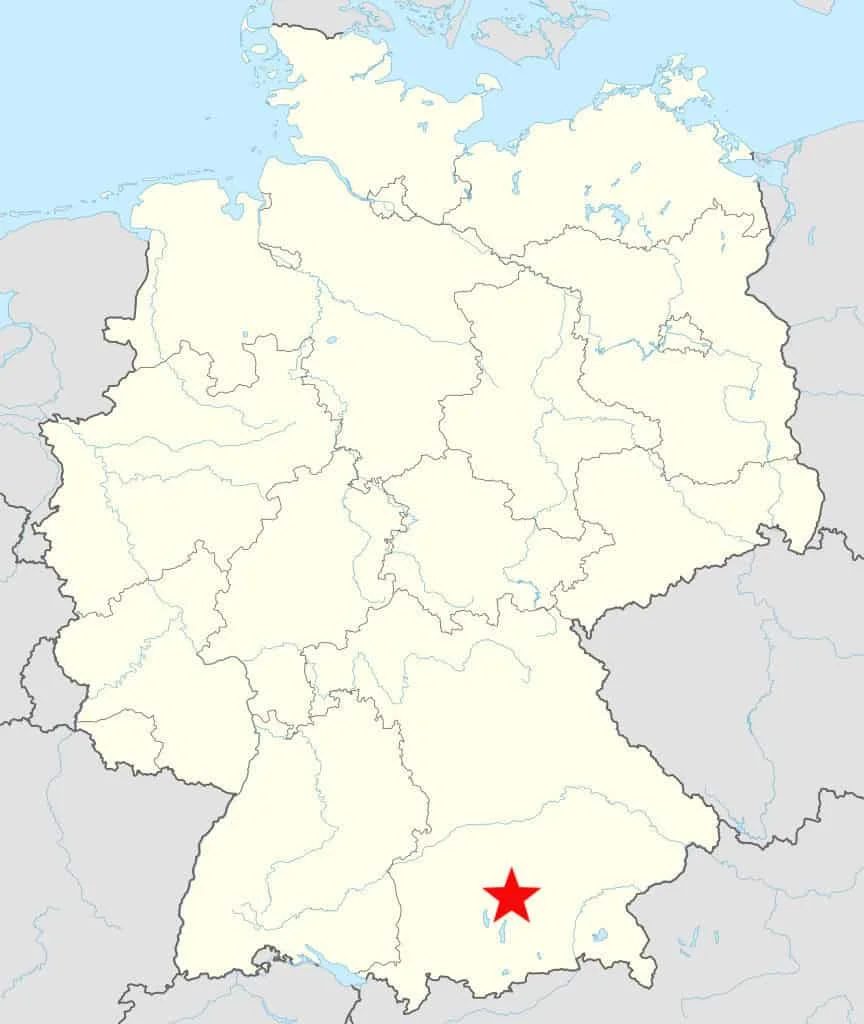
With all the wonderful things to do in Bavaria, visitors will be rightly tempted to use Munich as a hub for further exploration. Almost every Munich travel guide will recommend you include several days for sightseeing in Munich proper, and several days’ worth of excursions. We heartily agree with this advice and have structured this post accordingly.
Munich Greeter Program – A great way to get an introduction to a new city and get some good insider’s tips and knowledge is by hooking up with a local. Obviously a friend or family member in a city is ideal, but sometimes we don’t know anyone in a new place. One great option in Munich is to do a Munich Greeter Program tour. It matches new visitors to the city with a local greeter who volunteers their time to show the person around the city.
It is recommended that you register your interest with the program 4 weeks or more before your visit to have the best chance of being matched with an available greeter. The program is free, although donations are very welcome to keep the program running (we definitely recommend giving one if you are matched). You do not give money to the guide, although if your walking tour includes food or drink stops, entrance fees, or public transit, you will need to cover these optional fees.
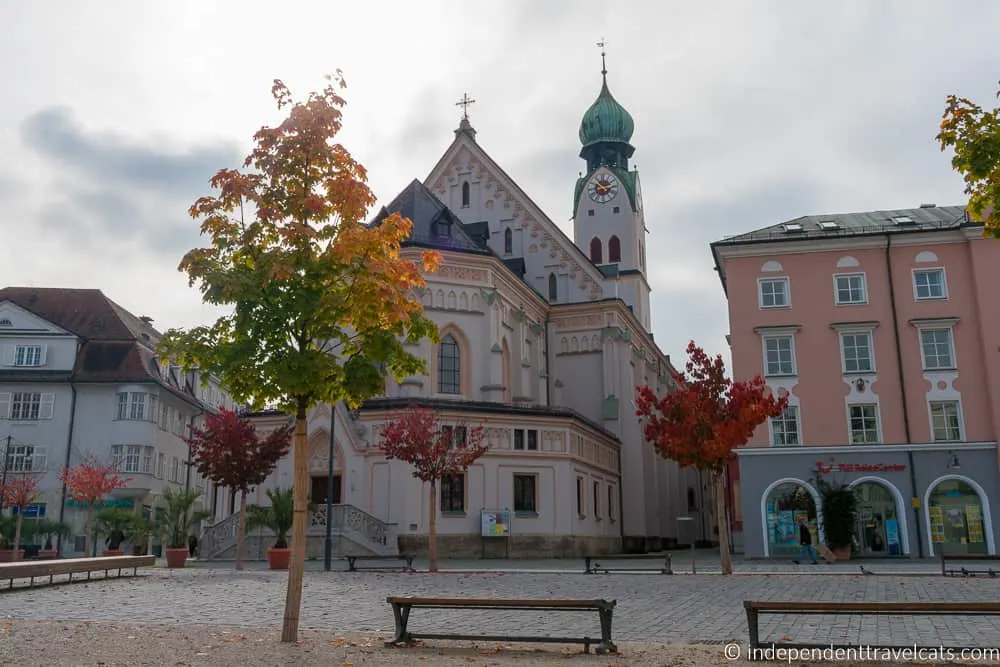
The Greeter tours are not designed to show you the highlights of the city or to be a comprehensive tour as there are lots of tours that already do that. The greeters generally show people around their own neighborhoods where they live or a place they know particularly well. So you are much more likely to see and learn about more offbeat places rather than top tourist attractions.
Our tour was with a German university student in the field of city planning and he talked to us about city planning, little known beer gardens, local statues, the university system, coffee, as well as lots of local history. He took us to places we would have never found on our own and talked to us about things we would not have learned about on a general walking tour. We can definitely recommend checking out the program! – Jessica Norah, Independent Travel Cats
Fun Tours to Get Acquainted with Munich
Munich Hop-On Hop-Off Tour 1-Day or 2-Day Ticket – This is our favorite way to familiarize ourselves with a new city. Expect your narrated tour to take you to all the Munich main attractions. Get off the bus at any stop to explore more closely and get back on to continue at will. Click here for tickets and more information.
Munich: Private 2-Hour Tour with an Art Historian – An immersive exploration of Munich through its architecture, monuments, palaces, museums or churches. Customized to your particular interests. Click here for more information.
Classic 4-Hour Bike Tour of Munich – Iconic stops in the Old Town, along the river, in the English Garden, and at a beer hall. Includes experienced guide, bike and helmet. Click here for more information.
Glide Through History: Munich 3.5-Hour Segway Tour – A great way to cover more ground while you visit Munich main attractions. Training session included to boost your confidence. Click here for more information.
Getting Around Munich
Any Munich tourist map will orient you from Altstadt. This is the historic Munich city centre which dates back to medieval times. The neighborhood is quite compact and served by various forms of public transportation. If you’re driving, note that parking can be challenging.
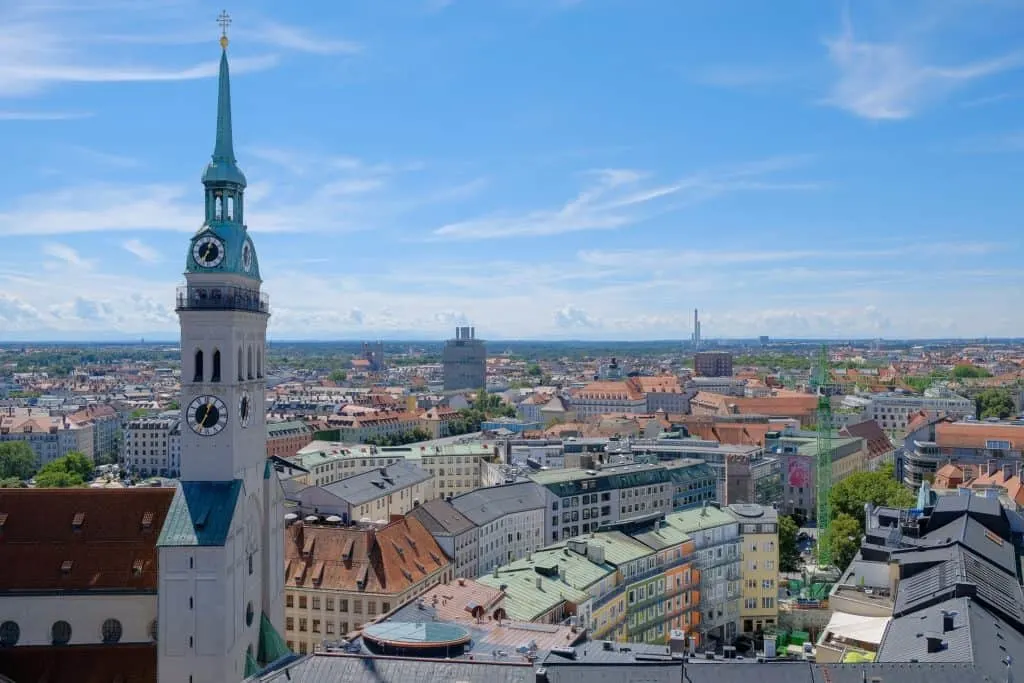
As the Munich public transport map will confirm, getting around Munich is easy. Think U-Bahn (underground) and S-Bahn (surface). There are tram routes and buses to fill in the gaps.
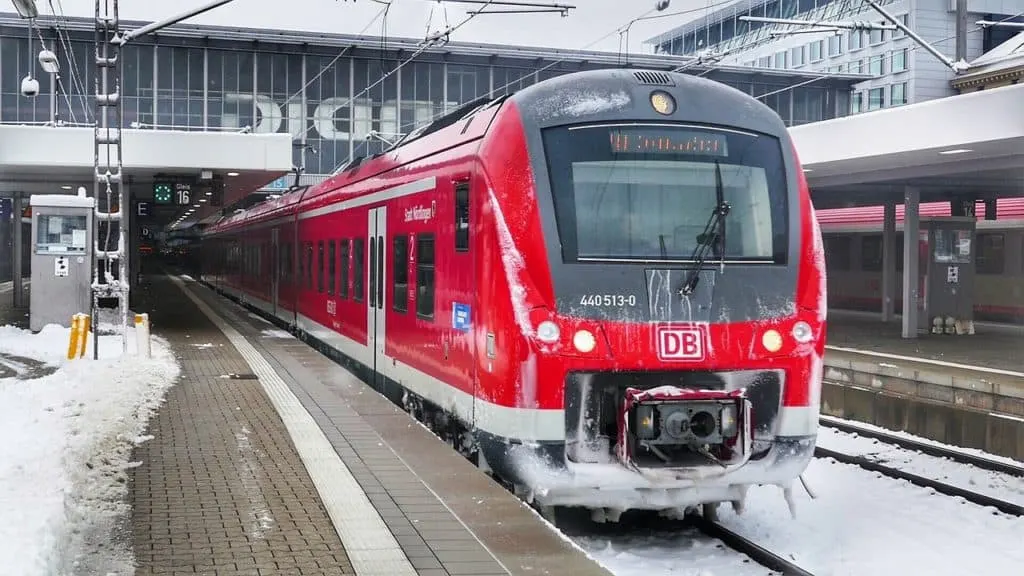
In Munich, tickets and transportation passes are easily purchased at the main Hauptbanhof train station and in U-Bahn and S-Bahn stations. Tram kiosks are easily accessed near stops as well. Don’t forget to validate your tickets! For a detailed explanation, click here.
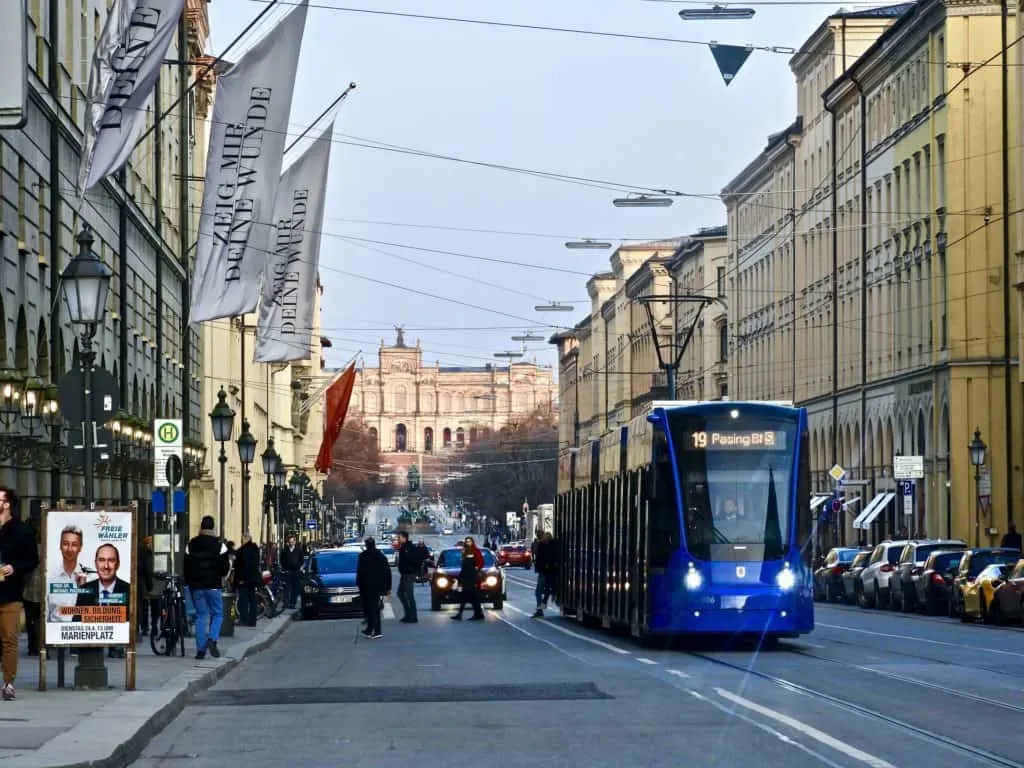
For official Munich transport map selections, click here.
Most Munich sites will direct you from the nearest tram or train stops, and in Munich, things to see are usually within short walking distances from them, so easily managed.
Munich Must See: Top Sights in Munich Organized for You to Consider
Munich sightseeing begins in Altstadt. This is the historic borough which comprised the original city beginning in the 12th century. Altstadt contains many of the top things to see in Munich.
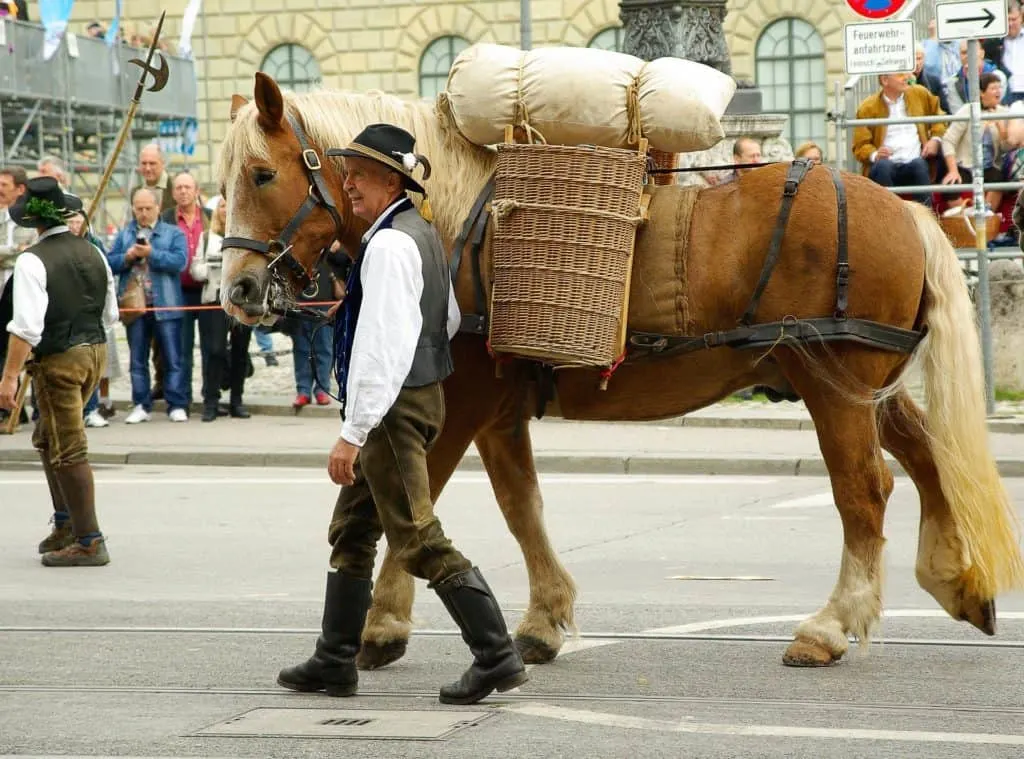
Munich was a center for religious clergy and the high number of monasteries concentrated here gave it its name. Traders and upper class people had their own neighborhoods within Altstadt.
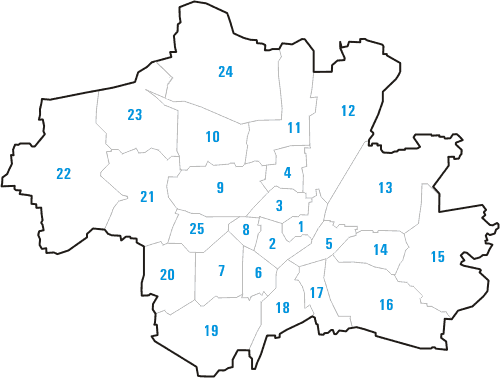
In 1724, Lehel – considered a suburb of sorts – was incorporated into the city. This was a forested neighborhood east and northeast of the Altstadt along the River Isar toward what is now the Englischer Garten. Altstadt-Lehel is #1 on the map above.
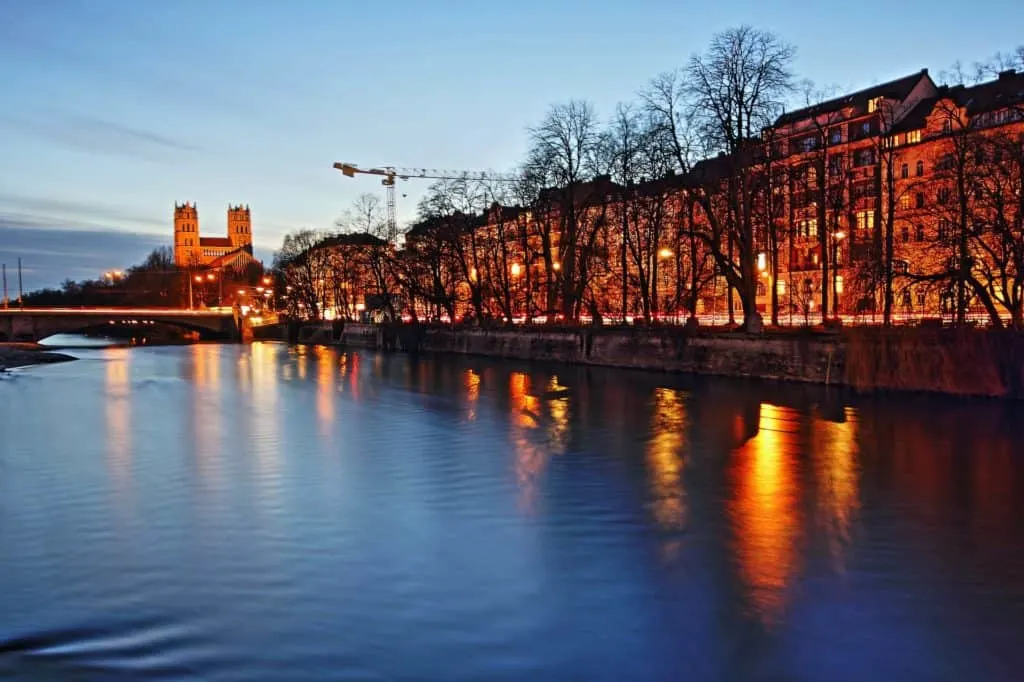
We’ll cover other top things to do in Munich in the Neuhausen-Nymphenburg (#9 on the map) and Schwabing (Freimann #12 and West #4) neighborhoods, which are located in first tier positions outside the central city ring. Another must do in Munich, Olympiapark, the site of the 1972 Games, is in between along the line between #4 and #9.
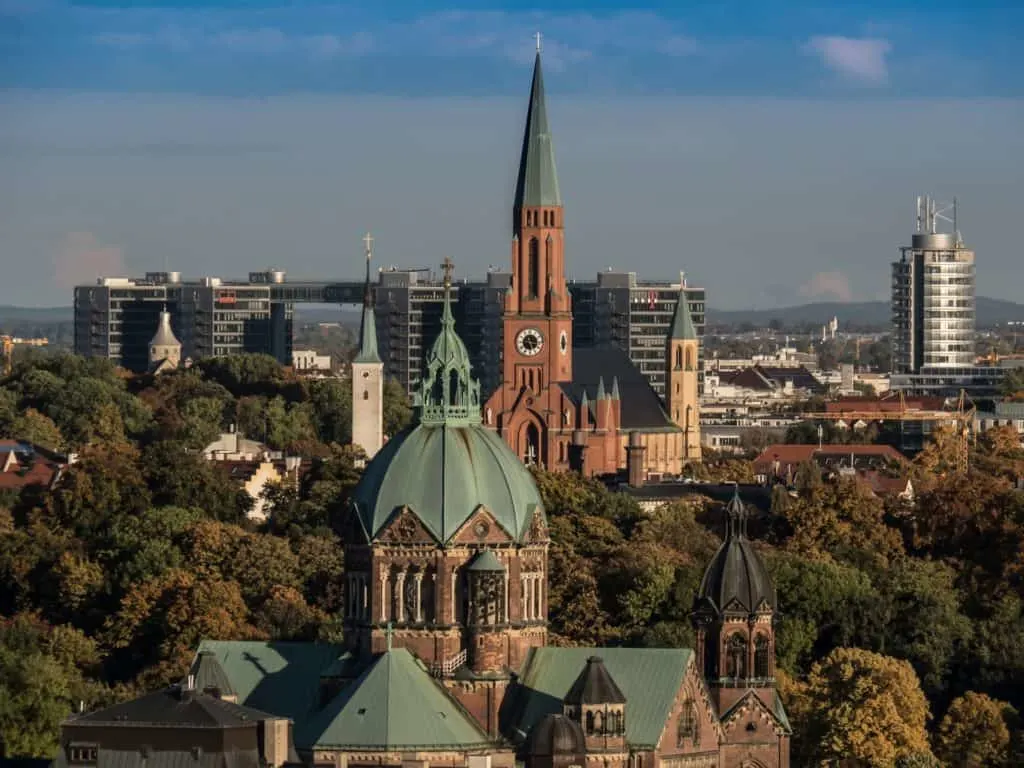
Things to do in Munich’s Altstadt
The majority of the top 10 things to do in Munich will be found here in the bustling center of Munich. Any list of the best places to visit in Munich will cover these and even more. If you are a first time visitor to Munich, you could easily confine yourself to Altstadt and feel like you’ve had a full experience. Book your new home in Munich for the duration of your stay with consideration of this aspect.
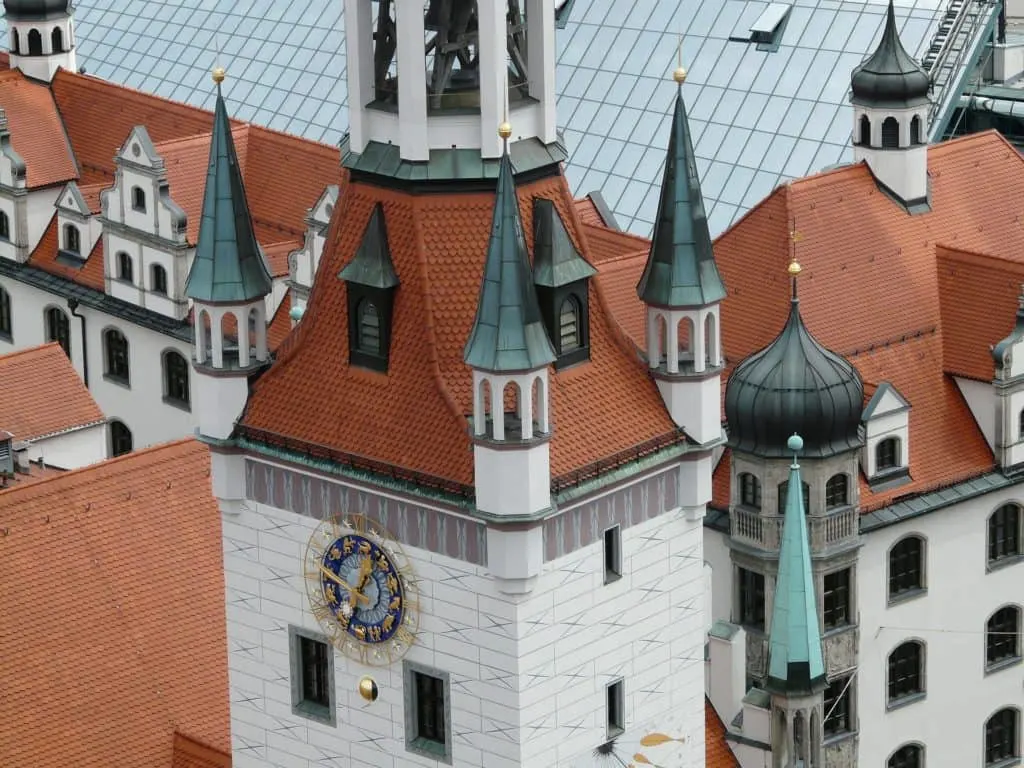
Marienplatz – At the very center of Munich, Germany, the Marienplatz is a popular gathering spot where all the action happens. Top attractions are clustered around Marienplatz, which has been the main square of the city since the 12th century.
Munich’s famous plaza has been the heart of the city’s Old Town (Altstadt) since 1158. Packed with cool shops, delicious eateries, bursting breweries, and historical landmarks, it’s one of the best must-see attractions throughout all of Munich.
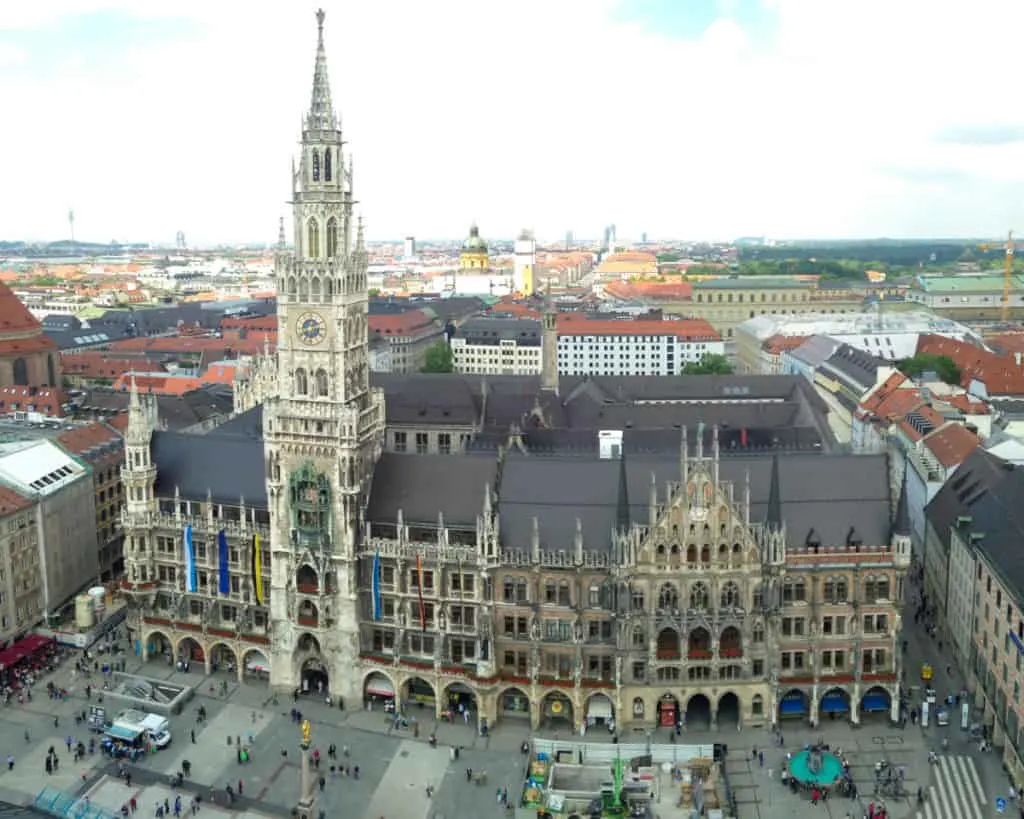
Bordered by historic structures, beautiful architecture, and bustling shopping markets, the Marienplatz is a pedestrian-only area with much to offer.
In terms of historic attractions, you’ll find the famous Rathaus-Glockenspiel, which puts on a fantastic show of 43 bells and 32 figures singing and dancing.
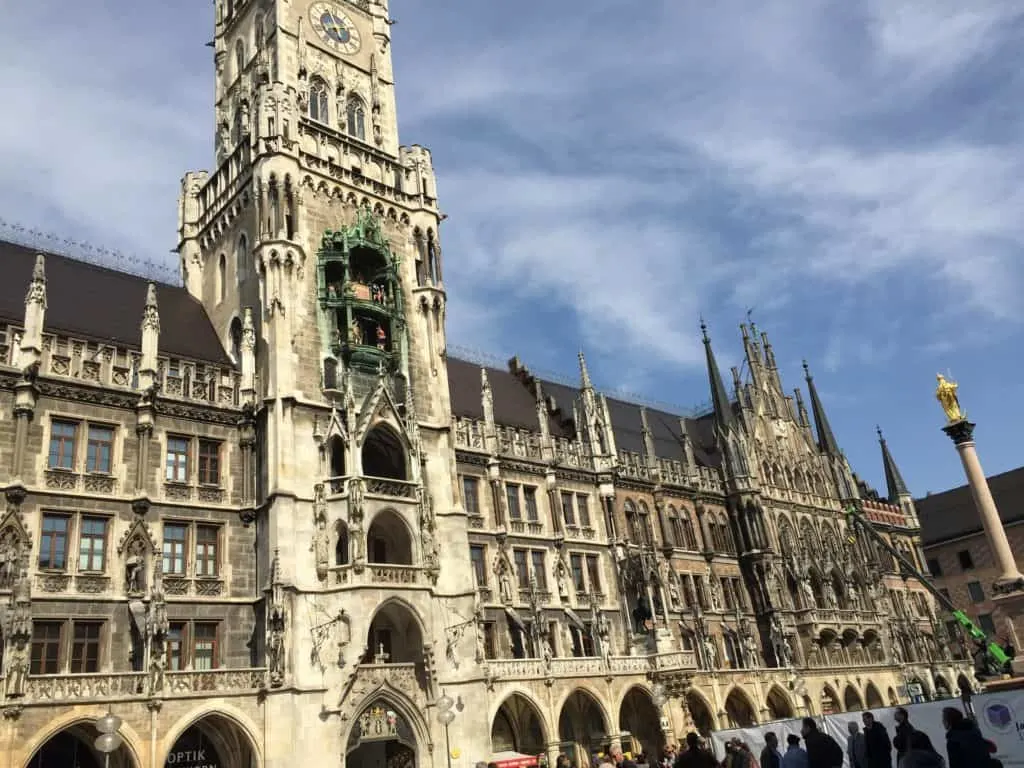
In the center of the Marienplatz, St. Mary’s Column (Mariensaule) stands tall; a beacon drawing in visitors. (See it at right in the above photo.)
But the most beautiful thing at the Marienplatz? Most definitely Munich’s New City Hall (Neues Rathaus), above. A breathtaking neo-gothic building, it boasts intricate detailing, a cathedral-like tower, and unbelievable adornments, dominating the Marienplatz in terms of beauty!
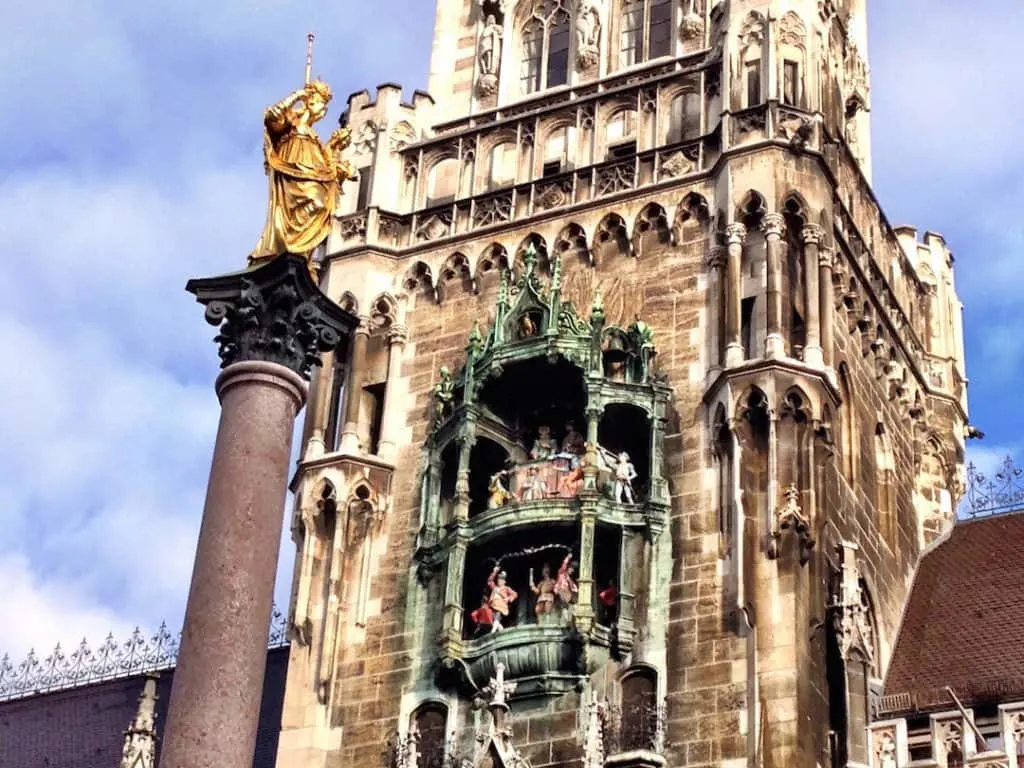
If you’re visiting Munich for the first time, the Marienplatz should be high on your list of must-see attractions! You won’t be disappointed. – Sophie, Founder of The Wanderful Me
Tip: Don’t miss the Ratskeller, a restaurant in the cellar of the New Town Hall. Dating from the 19th century, with traditional decor and cuisine.
Bayerische Staatsoper – The Bavarian State Opera dates from 1650 and is a world-renowned opera company. The opera performs in the neo-classical National Theater building, which is part of an architectural complex housing the Cuvilliés Theater, library and Residenz museums.
Take in a Stunning Musical Performance in Munich’s Old town
Munich: Gala Concert in the Cuvilliés Theatre – Classical music performed by the Bavarian Radio Symphony Orchestra and the Munich Philharmonic in one of the most important Rococo theaters in Europe. Click here for more information.
Munich: Residenz Gala Concert with Champagne Reception – Enjoy a champagne greeting and performance by the famous Residenz soloists accompanied by the Munich Philharmonic Orchestra. Click here for more information.
Residenz – The Munich Residenz is one of the most resplendent buildings in the city. On the outside, it seems like a stately, massive government structure, but after stepping inside, visitors quickly realize this is no ordinary museum.
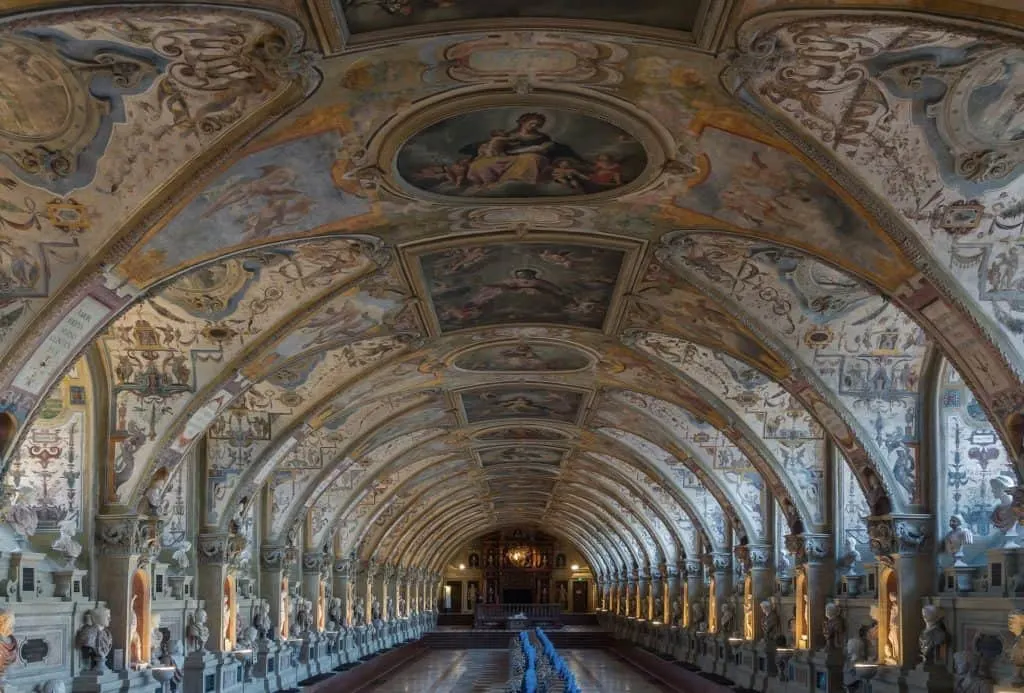
The Residenz is the largest city palace in Germany, with 130 rooms, 10 uniquely designed courtyards, and a massive collection of artwork and sculpture. Construction on the complex began in 1385, and the palace served as the home for Bavarian royalty and government for over 400 years. During WWII the buildings sustained heavy damage, but thankfully, most of its valuables were moved prior to the war, and since then, it has been completely rebuilt.
Rent an audio guide to hear the stories of the building’s treasures, Bavarian history, and reconstruction of the Residenz. There are many breathtaking rooms, including the Grotto, covered entirely in Bavarian freshwater shells, the Antiquarium, a stunning 216 foot long dining hall, and the Treasury, with its enormous collection of crown jewels. The opulence of the Residenz is beyond compare, making it a must see in Munich for visitors. – Kirsten, Kids Are A Trip
Click here for more more reviews and information on the Residenz.
Michael Jackson Memorial – When you visit Munich, you will definitely find yourself spending time in the Old Town Square – Marienplatz or Mary’s Square. In the old town, you will find one of the unusual memorials in town. And this one is dedicated to Michael Jackson. MJ didn’t pass away in Germany, but he did stay in Munich’s 5 star hotel Bayerischer Hof in one of his tours.
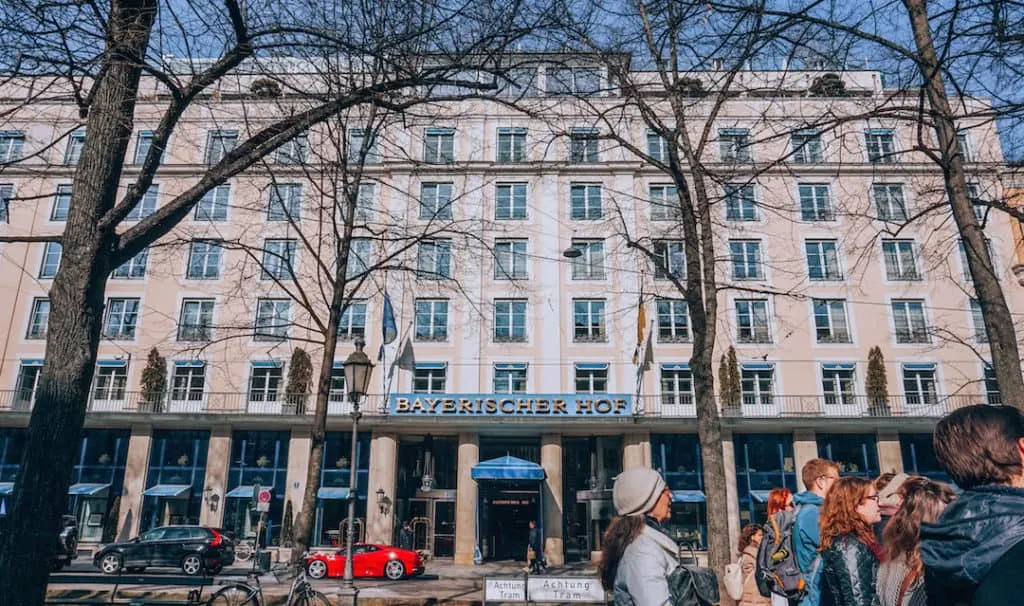
As you can see it is a “makeshift” Michael Jackson Memorial site. And it is located across the Hotel Bayerischer Hof.
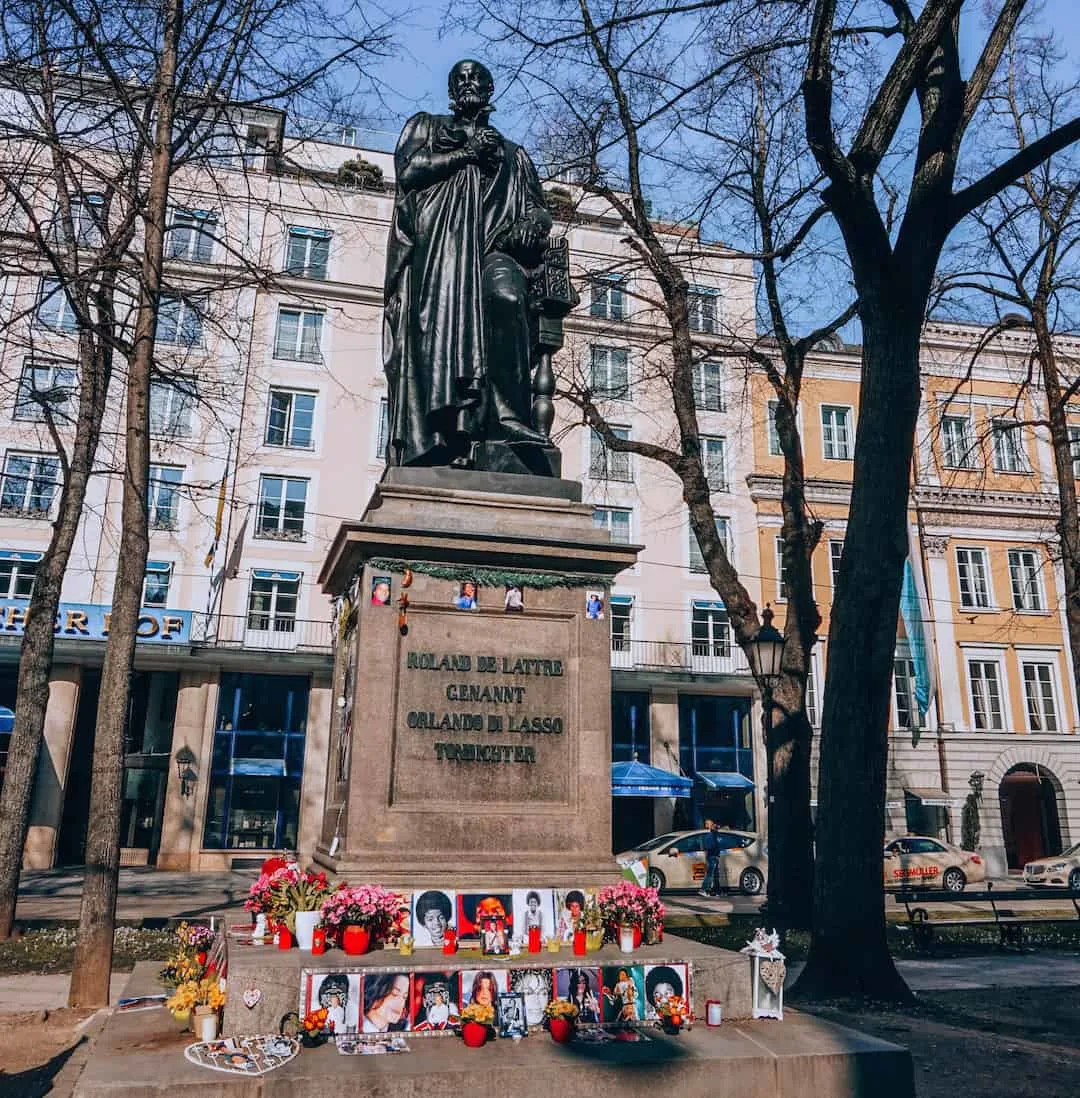
The memorial is based at the statue of a Renaissance composer – Orlande de Lassus. Music lovers and Michael Jackson’s fans have left love notes, songs and pictures of him at the pedestal of the statue. – Mayuri, To Someplace New
Viktuelienmarkt –
Viktuelienmarkt is a large market in Munich’s old town where you’ll find lots of vendors selling things like fruits and vegetables, cheeses and meats, flowers, and more.
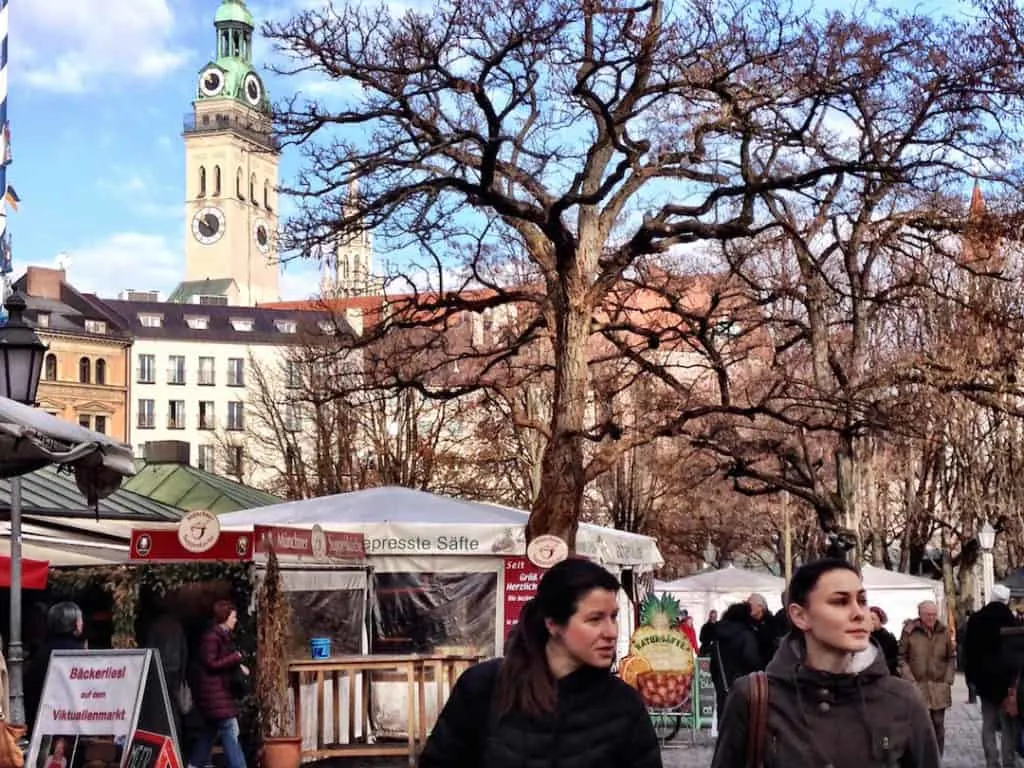
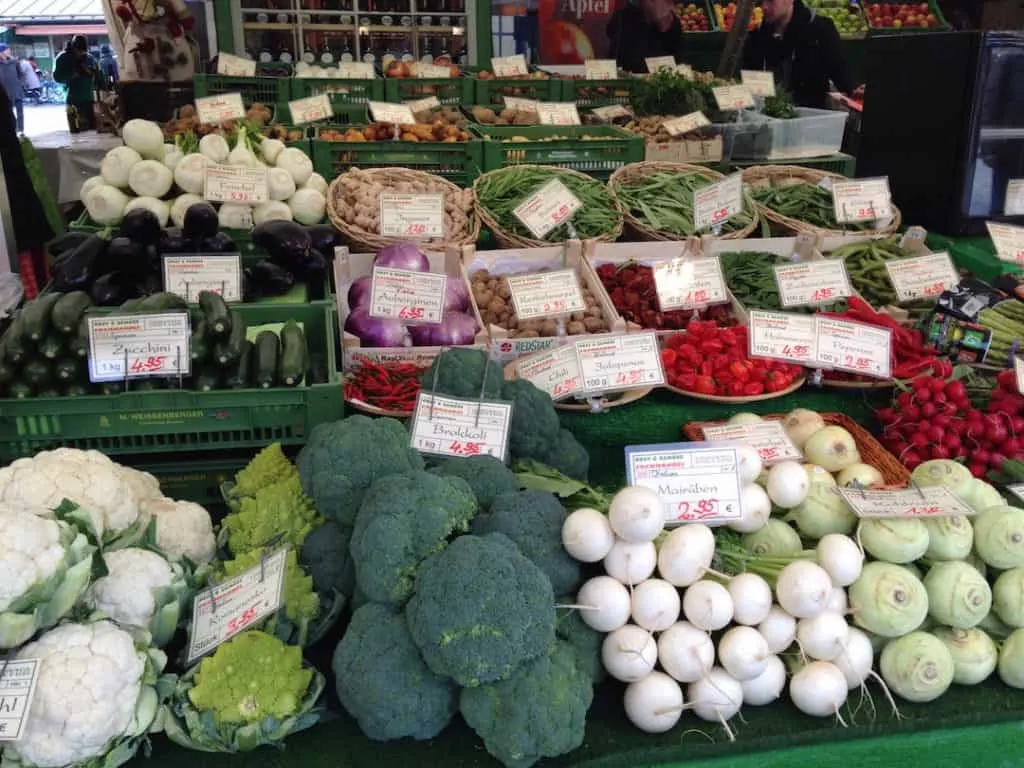
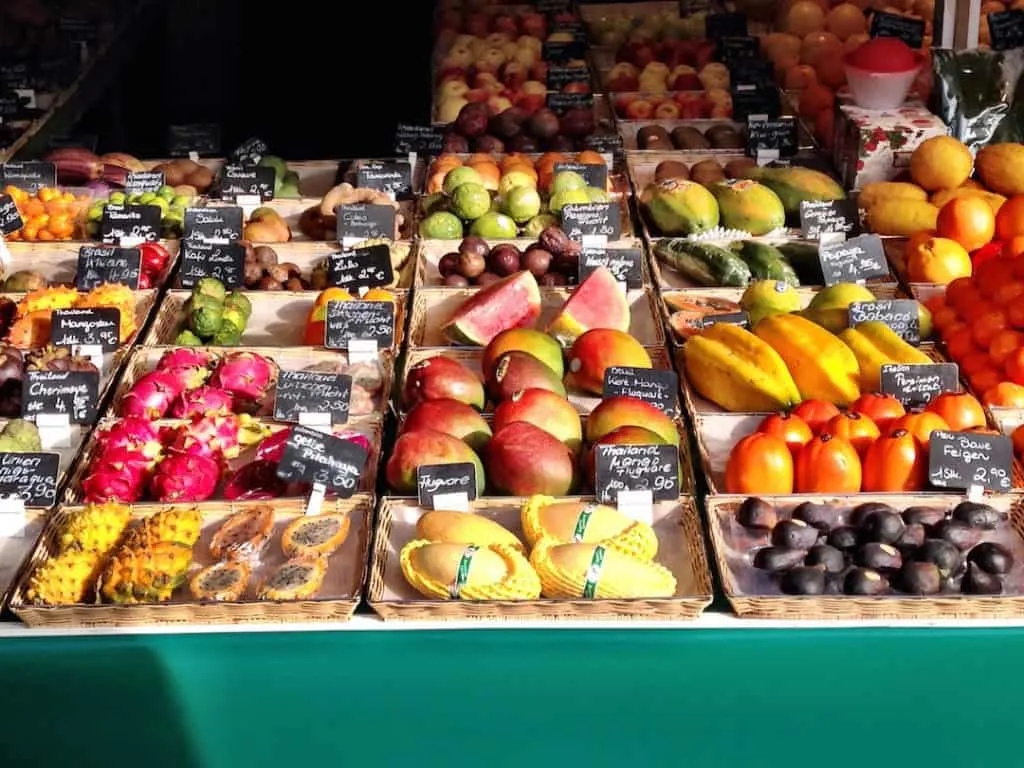
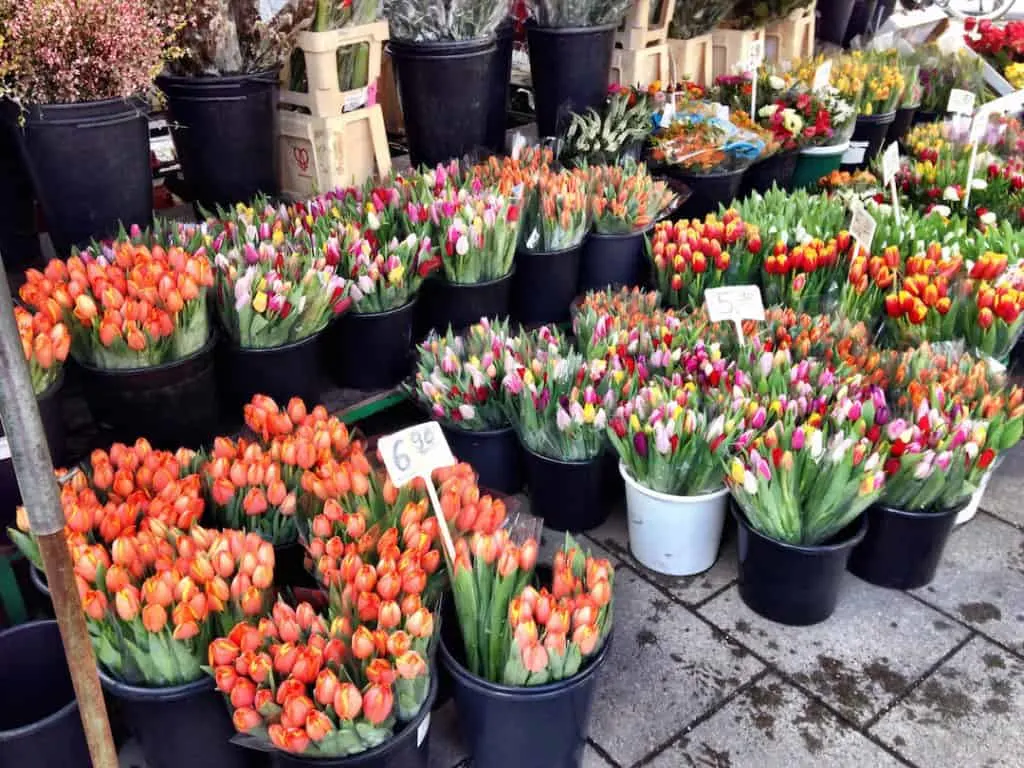
But in one area of the market there’s a large beer garden that’s frequented by both locals and tourists. Most beer gardens in Germany are owned by a brewery and only sell their own brand of beer. The Viktuelienmarkt beer garden is different though. It’s owned by the city and serves beer from each of Munich’s 6 major breweries on a rotating basis.
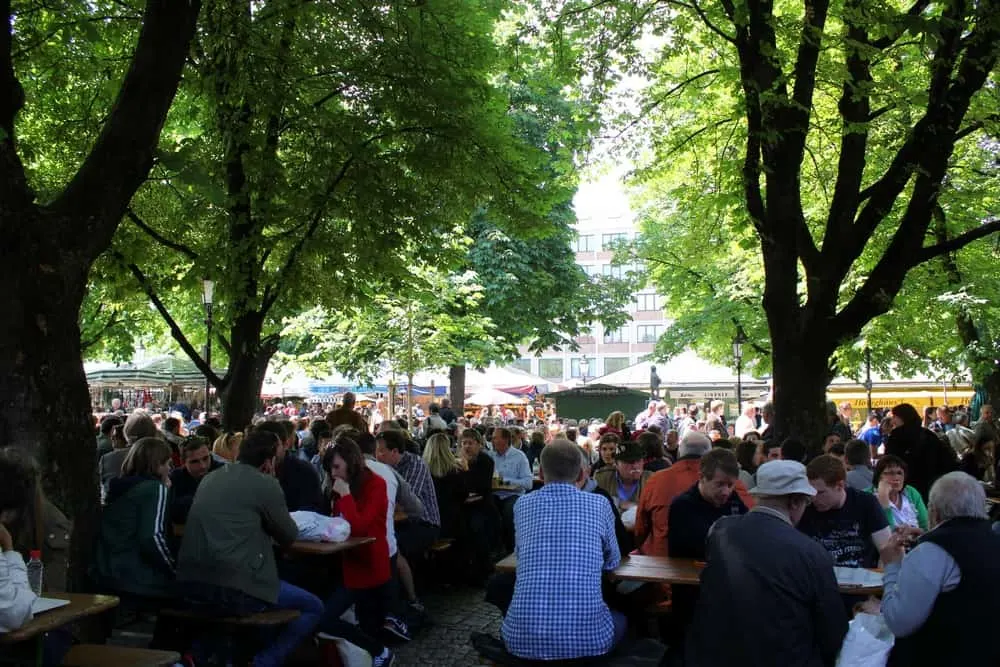
The beer garden has plenty of tables, but expect to share with other patrons. It’s mostly self-serve, so order your beer at the counter, though there is a small section of full service tables.
This is a great place to enjoy a relaxing afternoon with a brew and some friends, and it’s near enough to some of Munich’s most famous sights, like the Rathaus and Marienplatz. – Ali from Travel Made Simple
Viktualienmarkt Gourmet Food Tour – A cultural experience for the tastebuds with stops at several food stalls to learn about the historical origins of Bavarian specialties like weisswurst and other delicacies. Do not eat before taking this tour! Click here for more information and pricing.
Frauenkirche – Dating from the 15th century, the twin domed towers of Frauenkirche (Cathedral of Our Dear Lady in English) are probably the most easily recognizable of the top things to see in Munich.
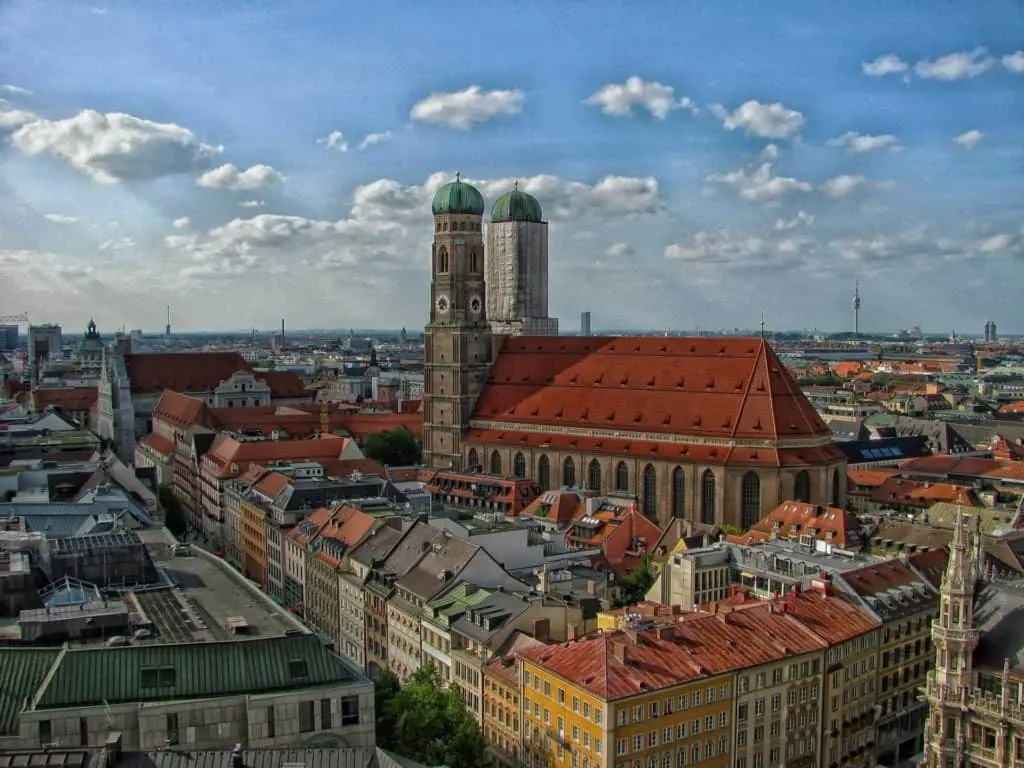
Built in the 15th century with a late Gothic style, Frauenkirche can hold 20,000 standing people. Even though much of it was destroyed during WWII, an artifact preservation effort resulted in saving a notable period art collection. As well, the spacious and light-filled interior is remarkable in its design.

St. Michael’s Church – is the largest Renaissance church north of the Alps in Europe. The most remarkable thing about St. Michael’s, aside from its splendid baroque design, is that it has been the center of cultural controversy in various forms throughout its history.
Initially a Jesuit congregation, ownership of the structure reverted to Bavarian royalty and eventually the Bavarian state. The church contains Wittelsbach dynasty tombs, and was the site from which Father Rupert Mayer preached anti-Nazi sermons during the Third Reich era.

Burgersaalkirche – If you’re interested in the Nazi resistance, you’ll want to visit Burgersaalkirche, which is located in an unassuming building close to St. Michael’s. This little church is a jewel box of Baroque design, with remarkable life-size sculptures depicting Stations of the Cross, magnificent frescoes, and a priceless 19th century “Christkind” statue bedecked with jewels.
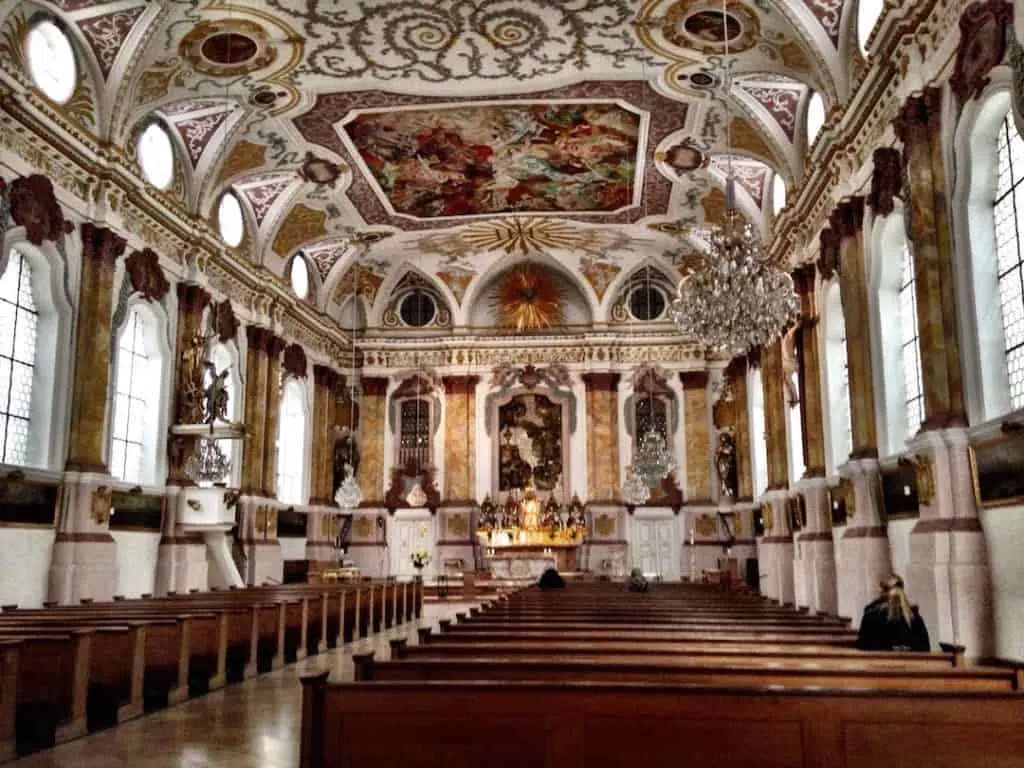
In the lower level of Burgersaalkirche, you’ll find a small museum dedicated to Resistance hero Father Rupert Mayer, who denounced the Nazis and their anti-Catholic sentiments from the pulpit of nearby St. Michael’s. Father Mayer was beatified and is a candidate for Catholic sainthood. Read more about him in our full write-up, here.
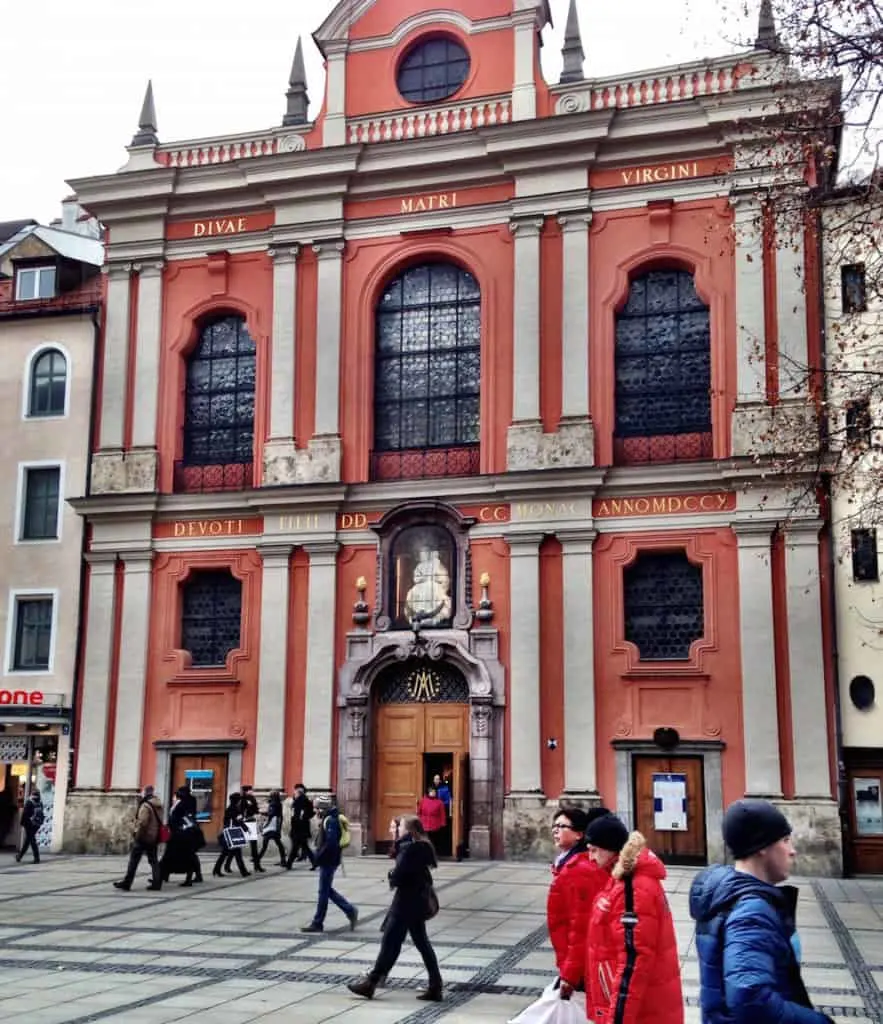
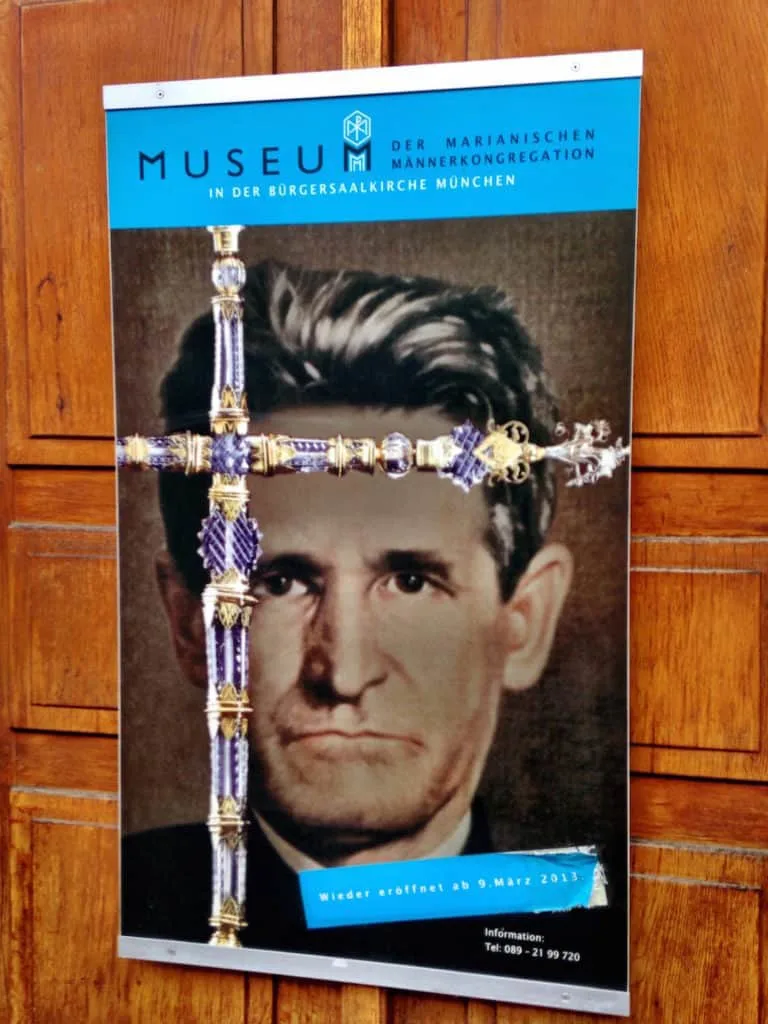
Deutsches Museum – The Deutsches Museum is a must see if you are traveling around Munich. With a total exhibition space of 66 000 square meters, and about 28,000 items exhibited from 50 different fields of science, it is no surprise that this is the world’s largest museum of science and technology.
From a mine in the basement to an observatory in the sixth floor, there is a lot to see and you will find the free guided tours very useful. The museum even has an app to help you out and it can be found on the museum’s guided tours page, https://www.deutsches-museum.de/en/whats-on/guided-tours/.
It would be impossible to see the whole museum in a single day so I would recommend researching what you would most like to see and visit that exhibition. My personal favourite was the Chronometry exhibit which includes a sundial garden on the 6th floor. I also thoroughly enjoyed the Optics exhibit on the 1st floor.
The entrance fee for one adult is €12, but there are group and age concessions. Of all the science and technology museums I visited in Europe this was one of the best. – Monique and Chris from MC Adventure Blog
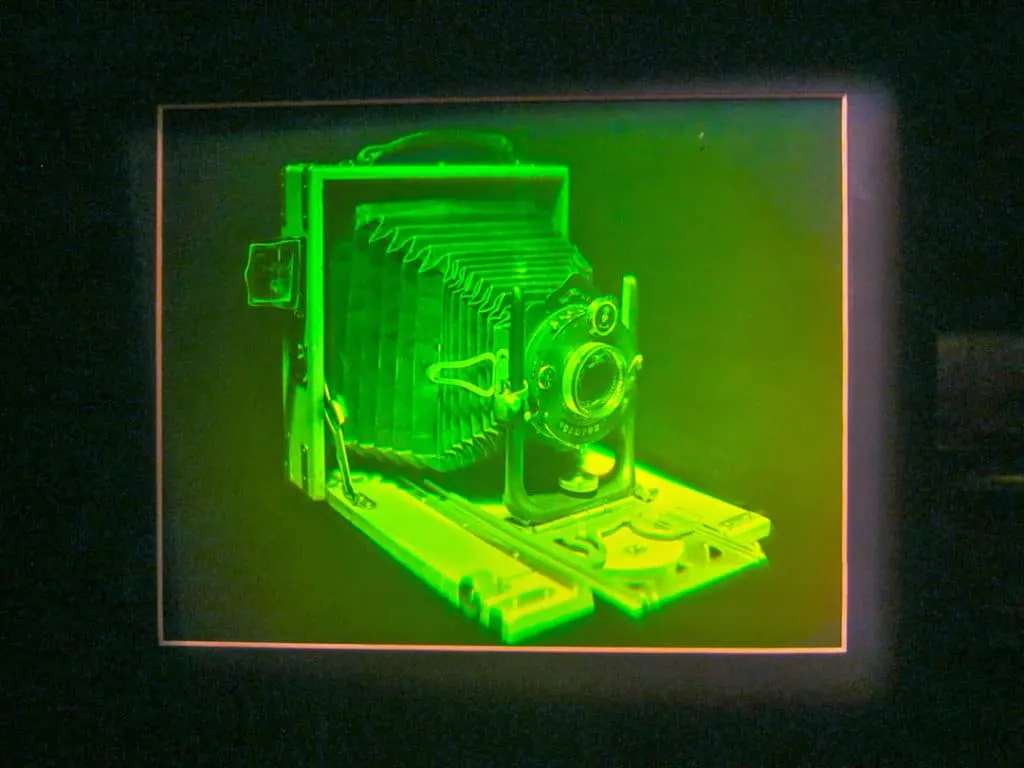
Zum Augustiner – When visiting Munich, you can’t miss visiting one of the traditional beer halls and restaurants that are around the city to experience the ambience and traditional Bavarian food and hospitality.
Our favourite is Zum Augustiner which is located in the heart of the pedestrian district, between Karlsplatz/Stachus and Marienplatz. The brewery dates back to the 1300’s, however the current iteration of the building was designed in the early 20th century. While waiting for your food and drinks you can admire the beautiful design and traditionally painted interiors of the six different rooms of the restaurant.
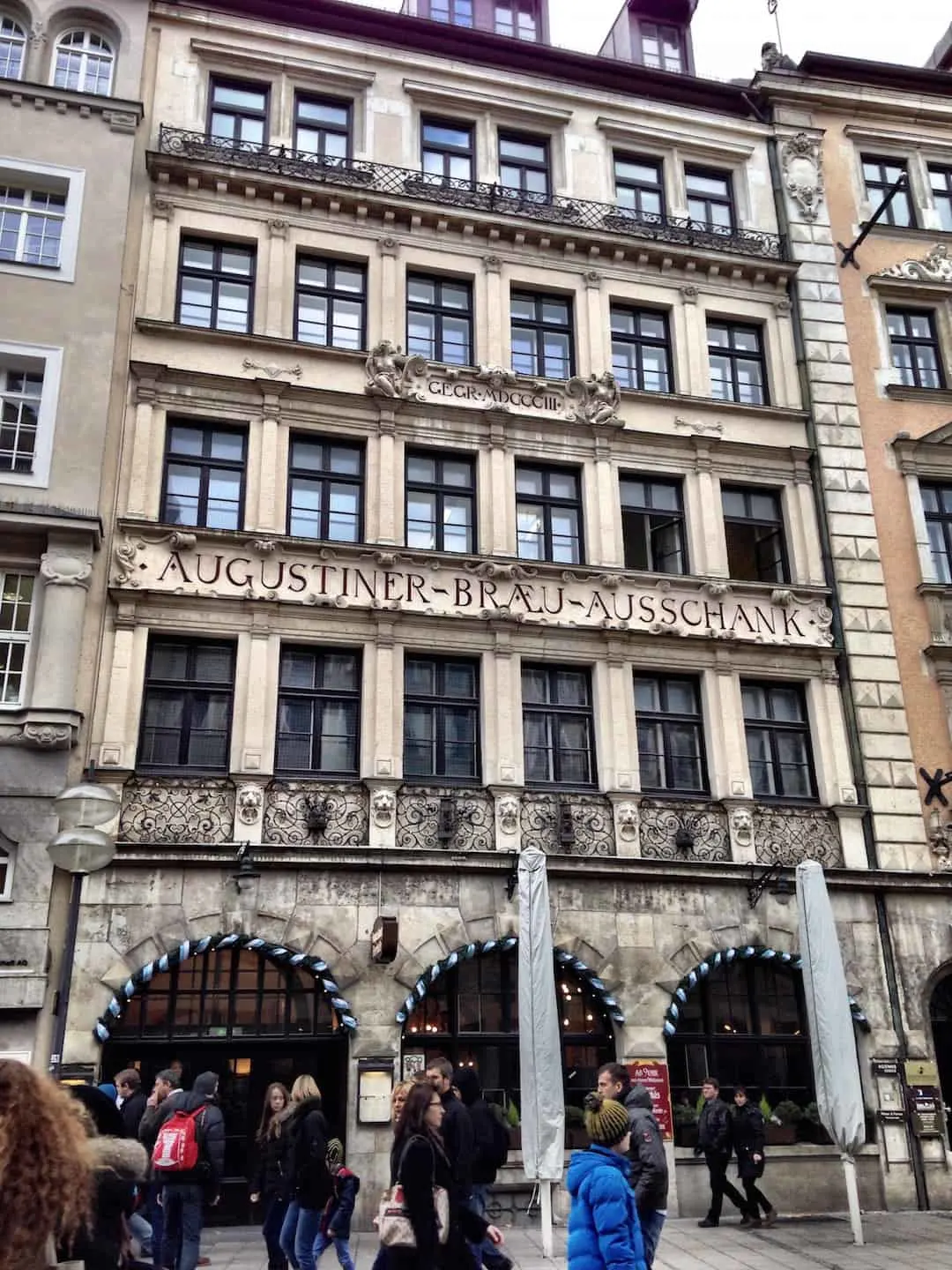
While the rooms are beautiful, the highlight of Zum Augustiner is the delicious Bavarian food on offer. Our favourite is the Kartoffelsalat (German-style potato salad) and Bavarian Weisswurst (white sausage).
Tradition states that Weisswurst should only be eaten in the morning and ‘should not hear the chime of the noon bells’, because in pre-refrigeration days they would spoil if left any longer! Prepared by boiling, don’t be put off by the greyish-white colour of the sausage – it’s because no artificial coloring is used. To eat, peel the skin from the sausage and dip in the accompanying Weisswurstsenf (sweet mustard). Yum! – Kylie Gibbon from Our Overseas Adventures
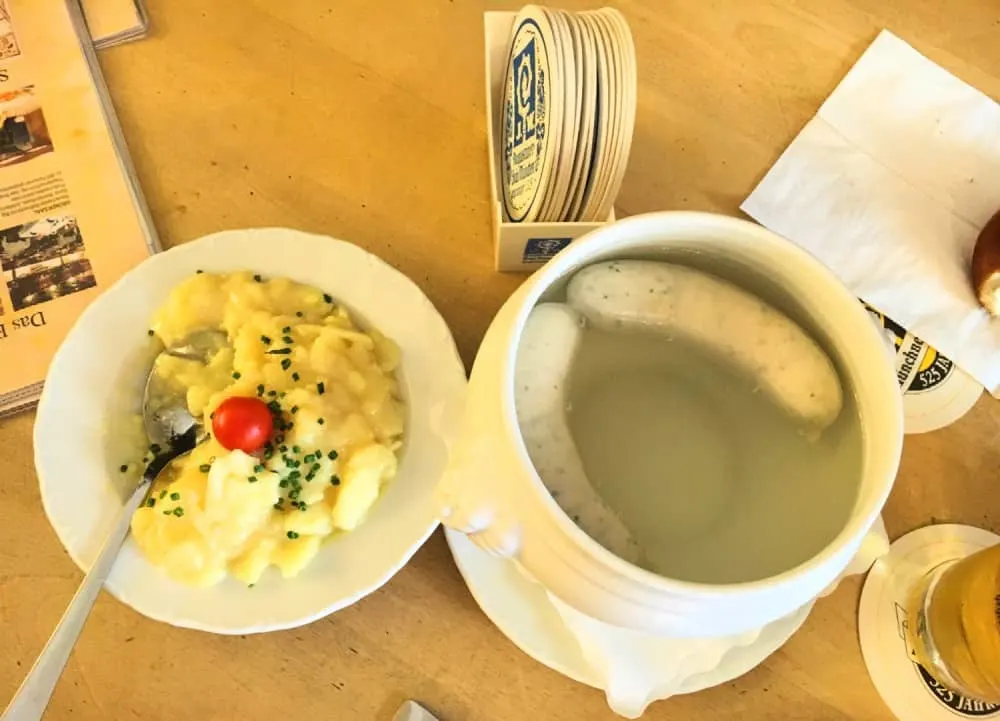
Hofbrauhaus – One of the most fun things to do in Munich is visit the Hofbrauhaus. We can’t think of a better place to be introduced to Bavarian beer hall traditions than this one. It is among the best beer halls in Munich, housed in a building dating back to 1589, with three floors completely remodeled in 1897.
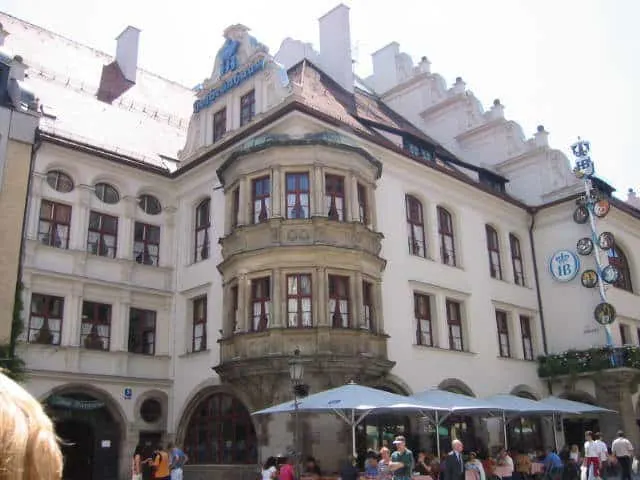
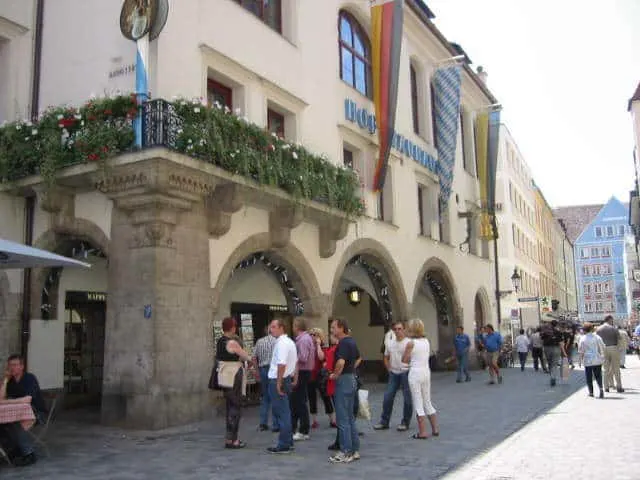
Hofbrauhaus is second largest on the list of Munich top attractions, right after Oktoberfest. Visited over the years by the likes of Mozart, Lenin, Hitler, Thomas Wolfe, Louis Armstrong, and Presidents Kennedy and George H. W. Bush, the Hofbrauhaus allows locals to keep their personal beer steins on the premises.
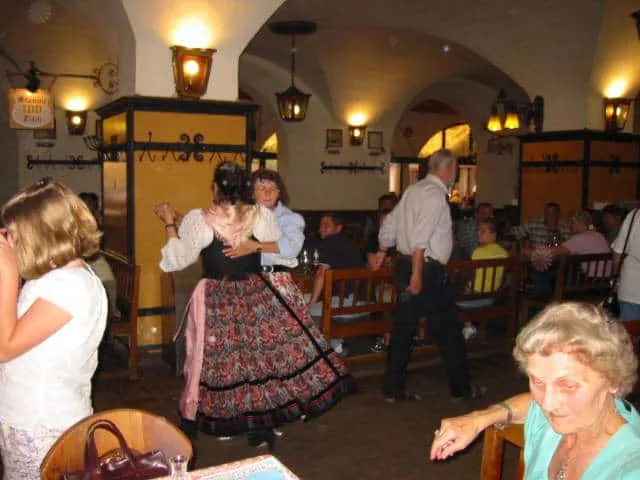
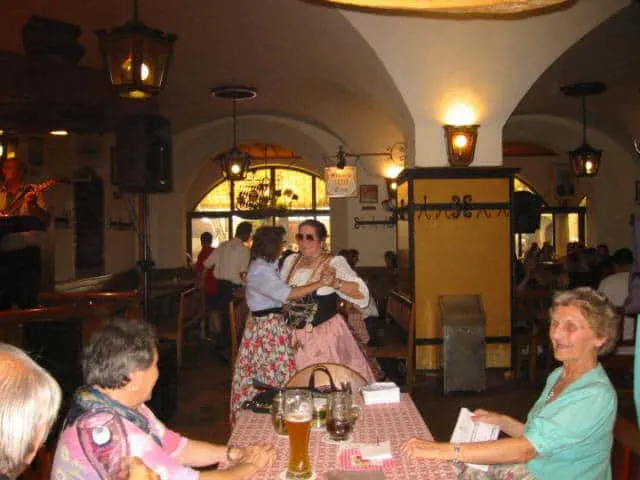
Cool Things to Do in Munich: The Olympiapark Area
BMW Museum – Germany is known for its nice cars : Porsche, Audi, Mercedes Benz, Volkswagen… and BMW. Walk around in the streets of Munich and you’ll see many nice cars. So why go to the BMW Museum, especially since it’s possible to admire nice cars in the street for free?
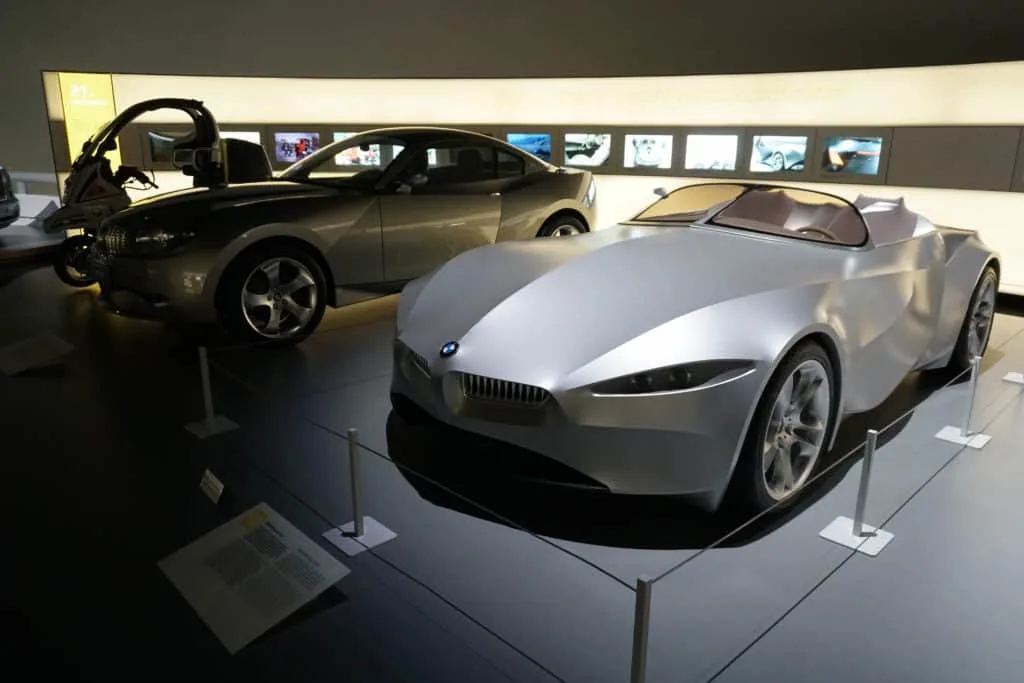
At the BMW Museum, you get a chance to know the history of the group BMW and needless to say, they display BMW cars. Not only the latest models, but also the first ones, from the 1930s. With each car displayed, there are little explanations.
Even if you’re not a big fan of cars in general, it’s quite interesting. It’s 10 euros to get in the museum but if you don’t want to pay, no problem! Just go to the opposite building, it’s called BMW Welt and you can get in there for free.
Other BMW cars are displayed, and this time it’s possible to hop in a nice car to take a picture. In BMW Welt, customers who just bought a brand new BMW go get their new car and leave the building with it! – Roobens from Been Around the Globe
Click here for reviews and more information on the BMW Museum
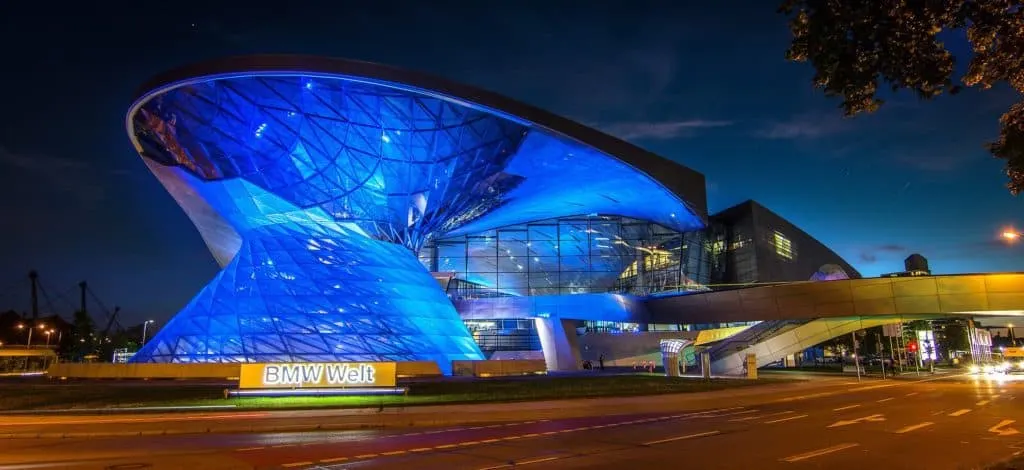
Olympiapark – Built for the 1972 Olympic Games, today Olympiapark is still an event hub. Dominated by the Olympic Tower, which contains a restaurant, observation platform, and a small museum, Olympiapark contains four separate sub-areas, and includes modern residential and shopping. Click here for reviews and more information.
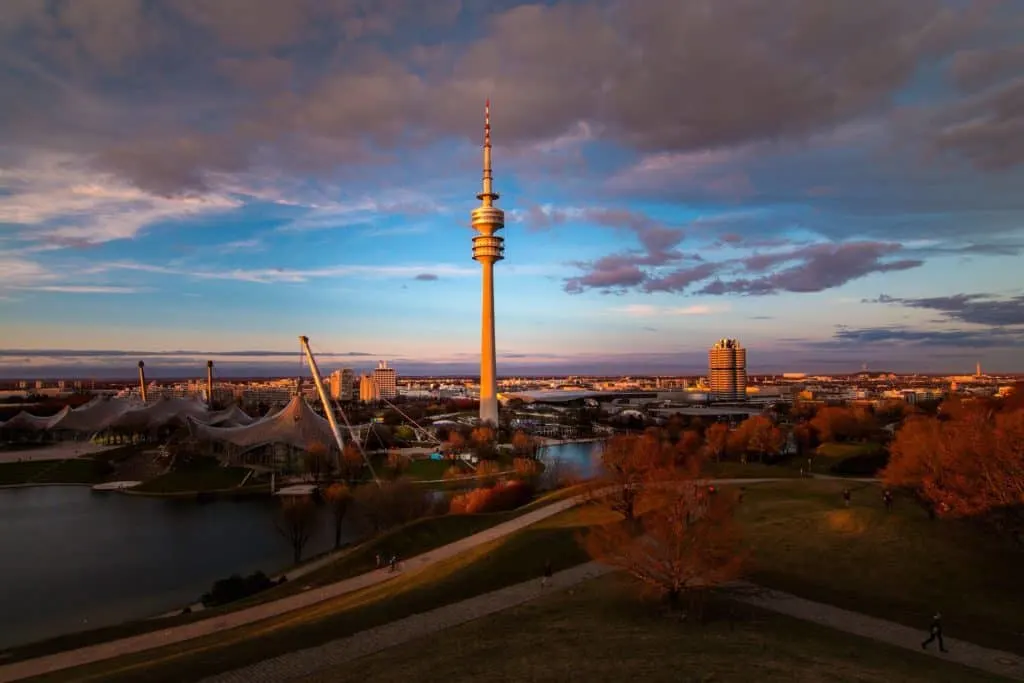
Munich Olympic Stadium Roof Walk & Zipline Tour –
For a unique view of Munich and a perspective seen by few, head to the Munich Olympic Stadium at the center of Olympiapark München for a roof walk and zipline experience. Designed as the main venue for the 1972 Munich Olympics, architects Günther Behnisch and Frei Otto brilliantly echoed the peaks and valleys of the nearby Alps with a vast cable steel net canopy; its saddle-shaped structure suspended at several points from masts.
The transparent ceiling panels allow light in, while protecting spectators. Almost fifty years later, the park remains a huge icon and continues to be used for sport and top entertainment events with a Flying Fox experience available to ascend the roof and zipline across the stadium.
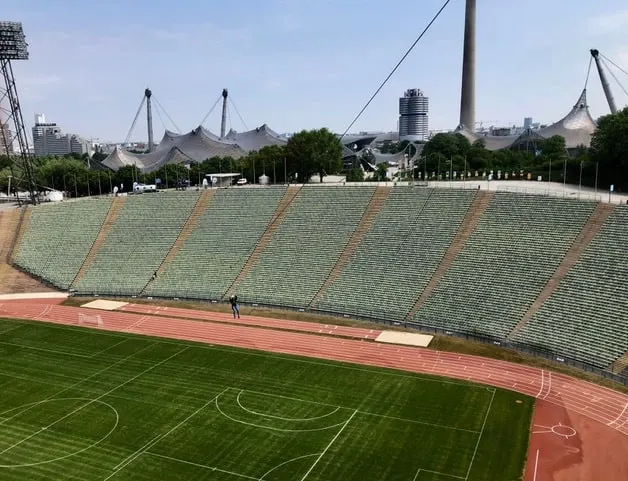
This is not for those afraid of heights, but to gain confidence, the company provides professional climbing equipment and secures everyone with chains. Climbing ladders and walking around the narrow causeways of the stadium, you can see the impressive and outstanding architecture and views of the city. After making our way around the roof, we zip line one-by-one on an exhilarating 200-meter ride across the arena to other side where we first began our journey. – Angela from JauntTV.com
Best Places to Visit in Munich: Neuhausen-Nymphenburg Neighborhood
We lived in this neighborhood during a summer house sit for two charming pups. Our second floor flat was equidistant from Nymphenburg Palace and the Hirschgarten. Talk about an outstanding location! Check out the charm of the neighborhood in the video below:
Hirschgarten – If you’re visiting Munich to experience the beer garden culture then you will have plenty to choose from. But, if you want a local experience, then look no further then Munich’s largest beer garden, Hirschgarten.
Hirschgarten is located in a beautiful massive park in the Neuhausen-Nymphenburg neighborhood, about 20 minutes by tram from Munich Old Town. Because it’s not right in the Old Town, you will be surrounded by locals and really get an authentic experience.
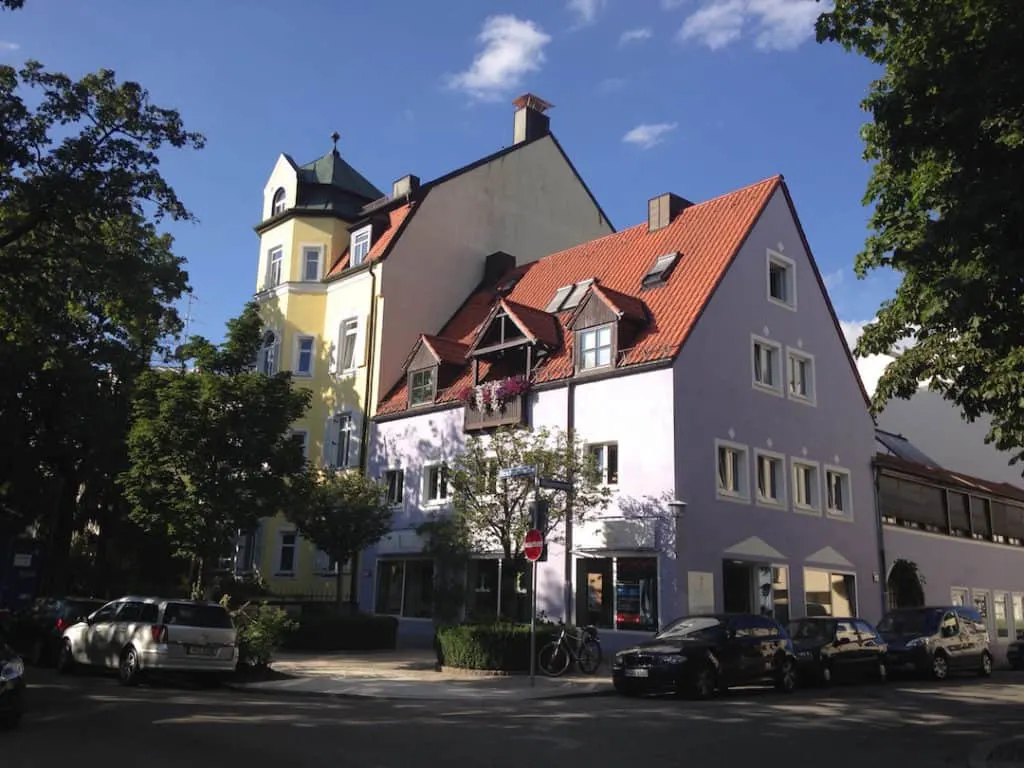
You’ll walk through the charming, leafy neighborhood from your tram stop on your way to the Hirschgarten. Take a minute to stop and admire the traditional residences.
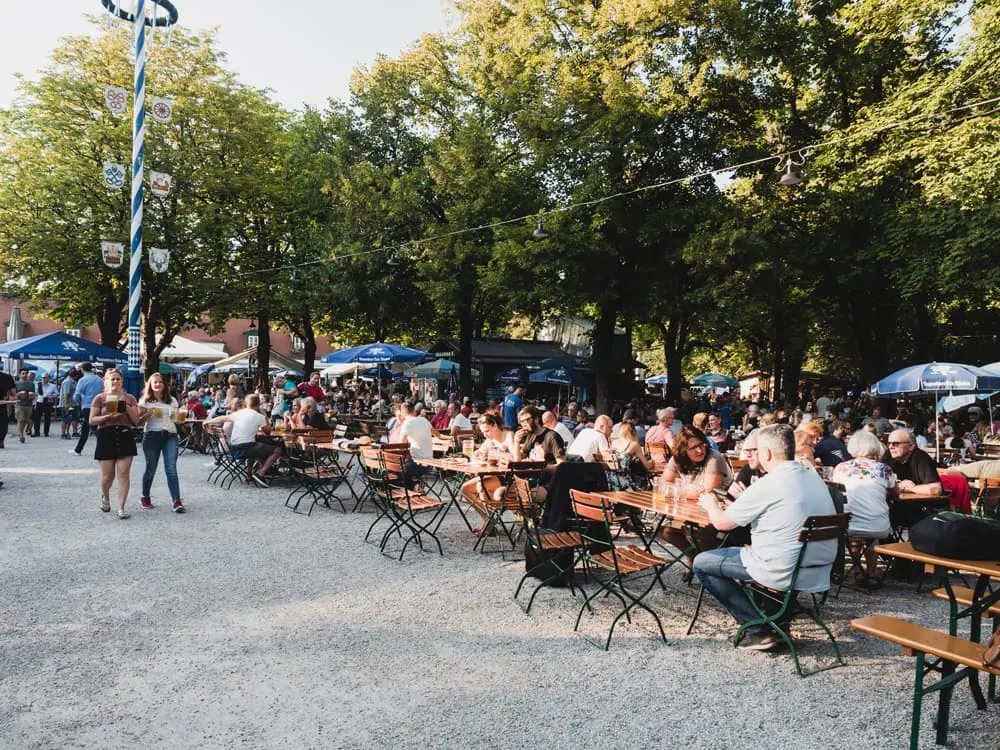
Hirschgarten is super busy, and even though there are thousands of seats, it can still be hard to find one. Most of the seating is in the self-service area, where you order food and drink from a few different counters and take it back to your seat. So grab a seat when you find one, either on your own table or sharing with others.
You can also choose to sit in the service area where table service is provided, just be aware the menu is more expensive. Types of food you should expect include giant pretzels, huge roasted pork knuckles (schweinshaxe), spareribs and roast chicken. At times, there is also a traditional band playing, just to add to the already jovial atmosphere. – Mandy and Chris, Almost Landing.
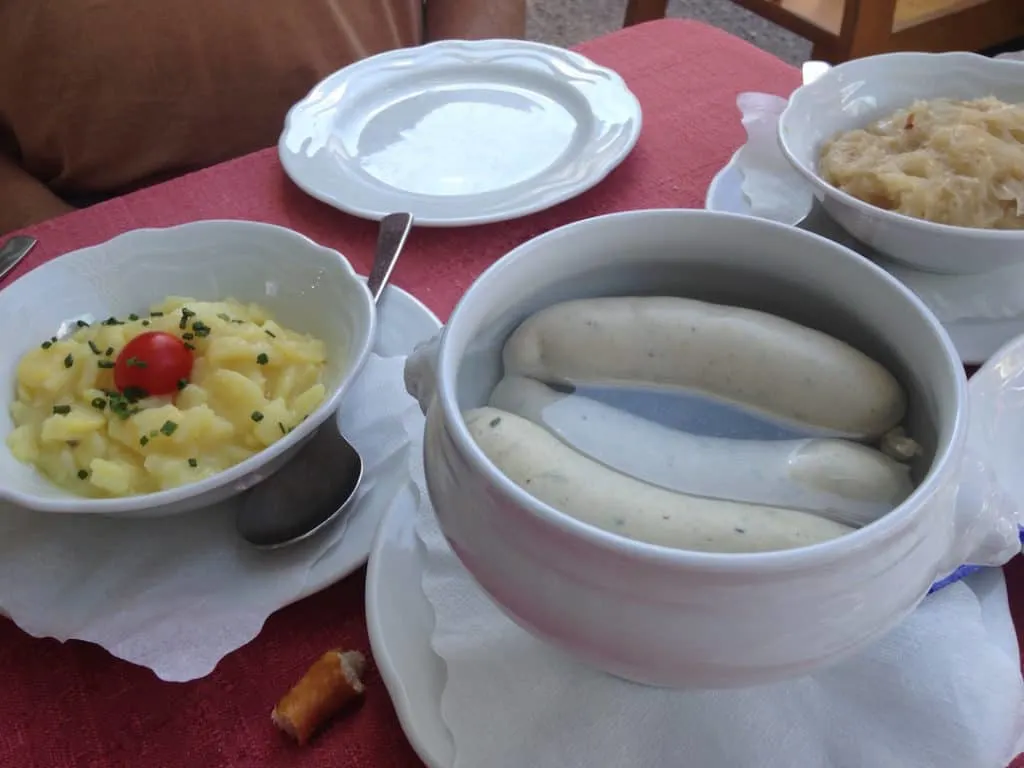
Nymphenburg Palace and Park – Even if you’ve been “castle’d out” from other sightseeing in Europe, you’ll easily understand why a visit to Nymphenburg Palace is one of the top things to do in Munich.
Just outside of Munich’s city center, you will find Nymphenburg Palace, often referred to as Nymph’s Castle, one of the most beautiful palaces in Europe. This is a spacious palace complex that consists of several pavilions and has also a lavish garden, and wooded park with river and walking paths.

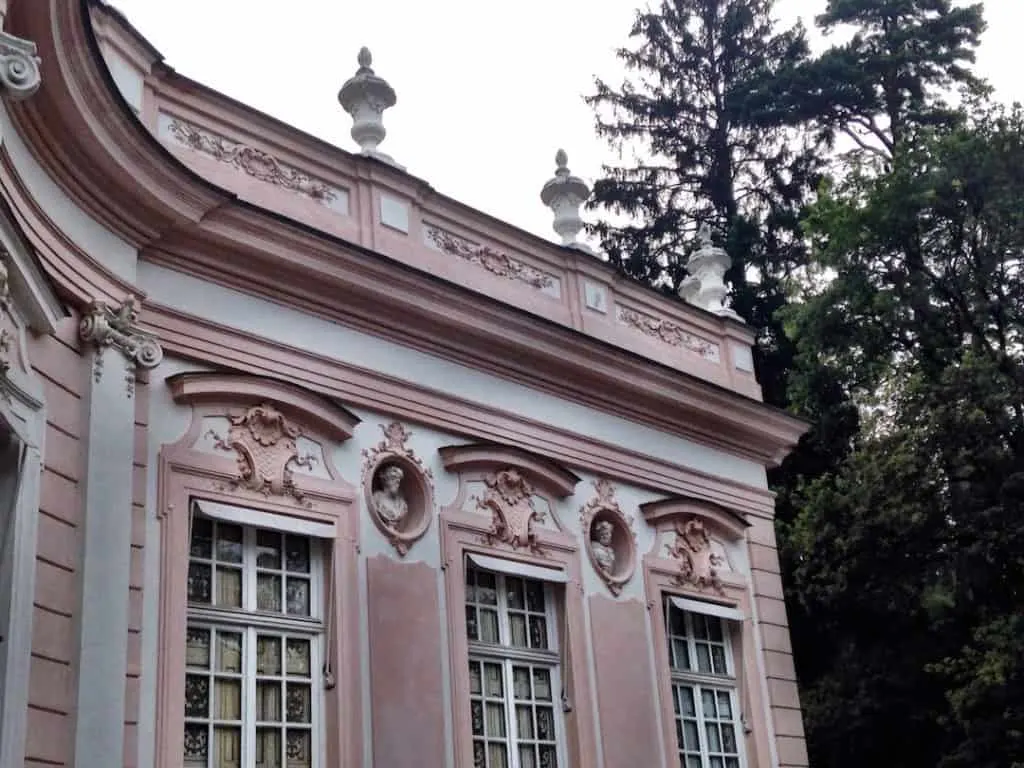
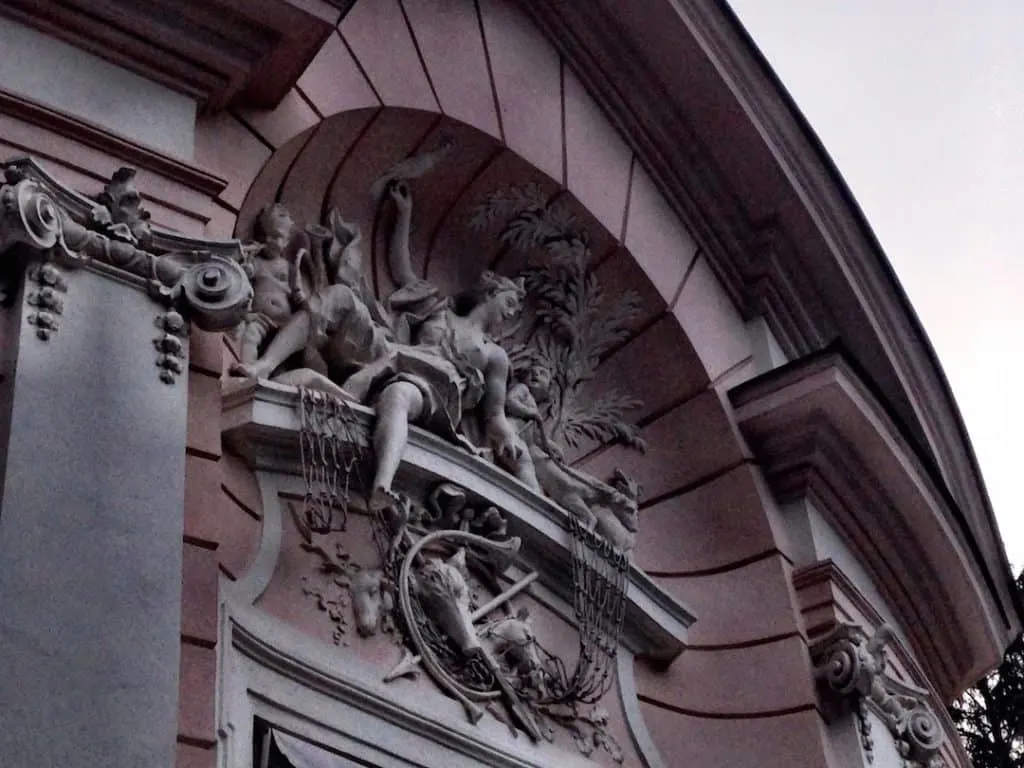
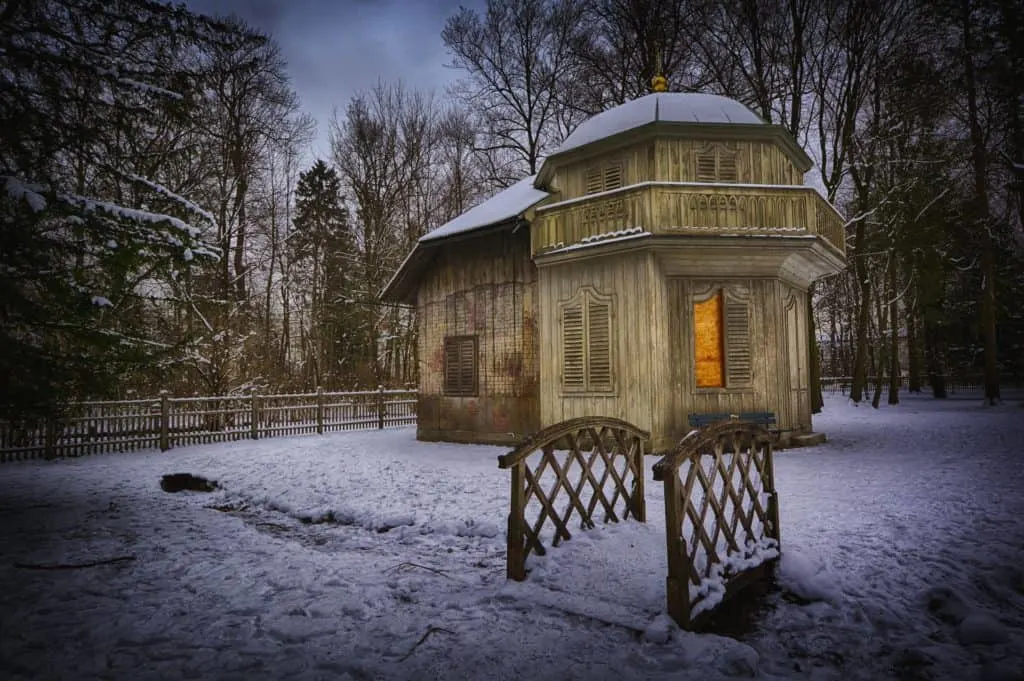
Nymphenburg was originally built in the 17th century as a summer residence given as a present by the Bavarian Elector Ferdinand Maria to his wife on the occasion of their son’s birth. The Italian architect Agostino Barelli realized the construction and it took more than a decade to complete it.
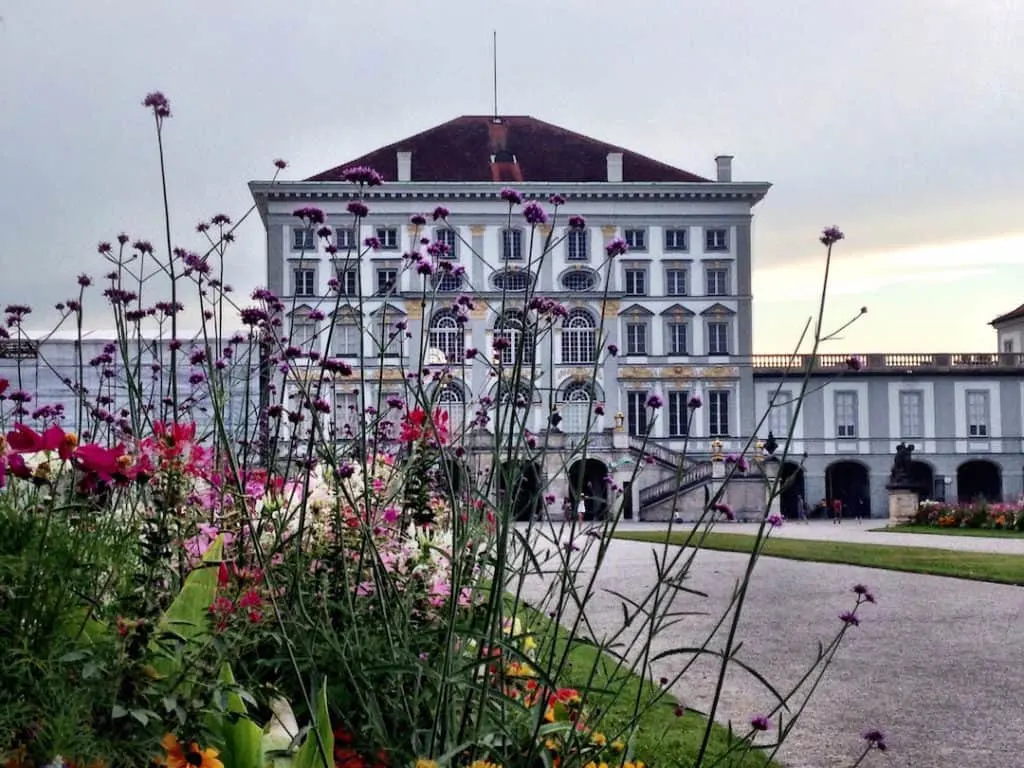
The original summer residence then was extended several times, and soon it became the favorite palace of the Bavarian royal family.
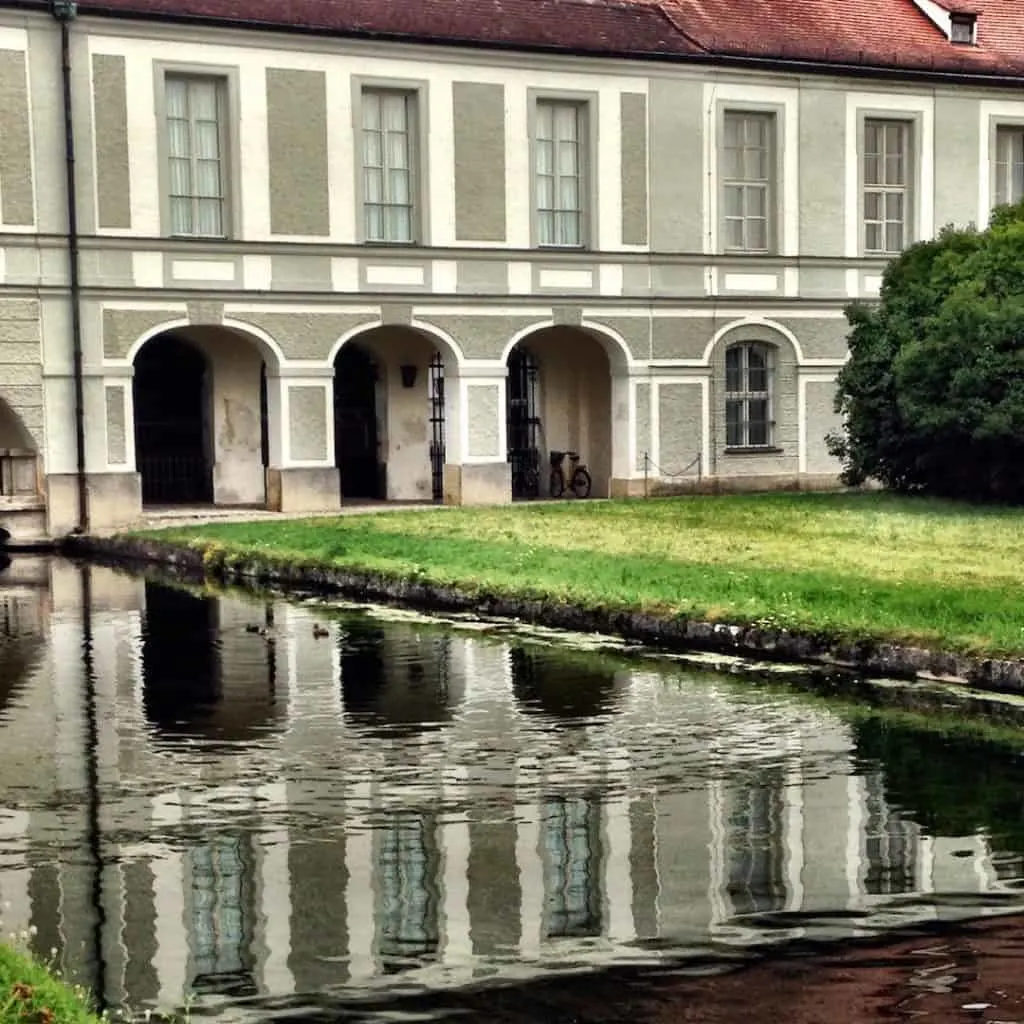
This is the birthplace of “Mad King” Ludwig II (the builder of the fairytale Neuschwanstein Castle), one of the most famous rulers of Bavaria.
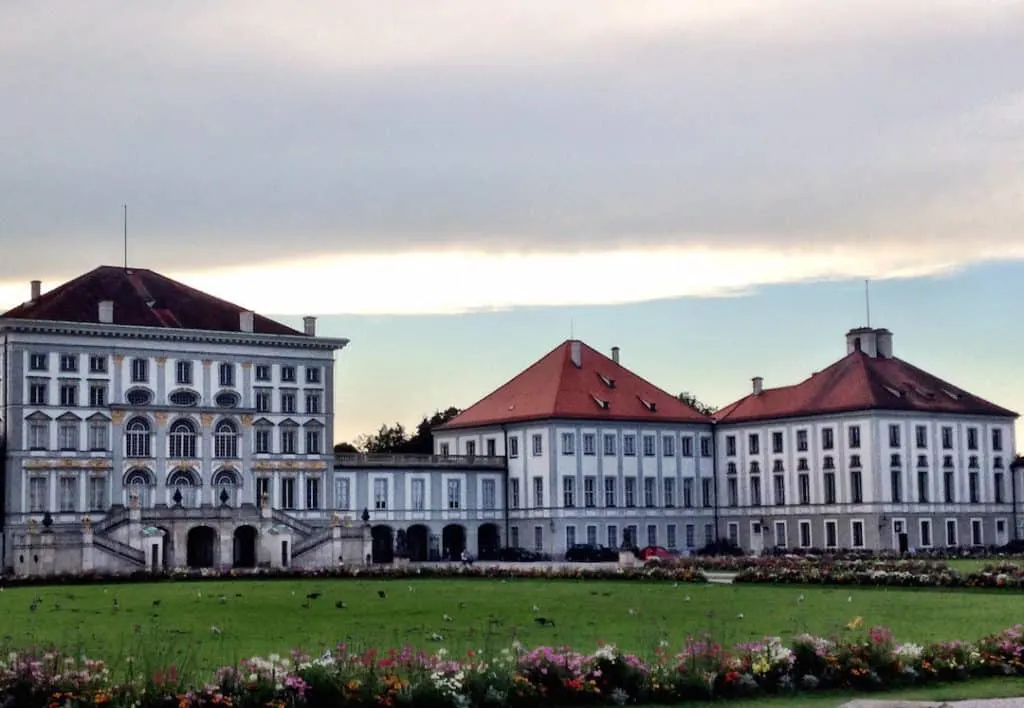
In the interior of the palace you can visit the royal apartments, the central and inner southern pavilions and the majestic garden pavilions. We were especially fascinated by the Steinerner Sall (Stone Hall), a wonderful grand hall with beautiful frescoes on the ceiling, but it’s also worth checking out the Gallery of Beauties or the Queen’s bedroom.
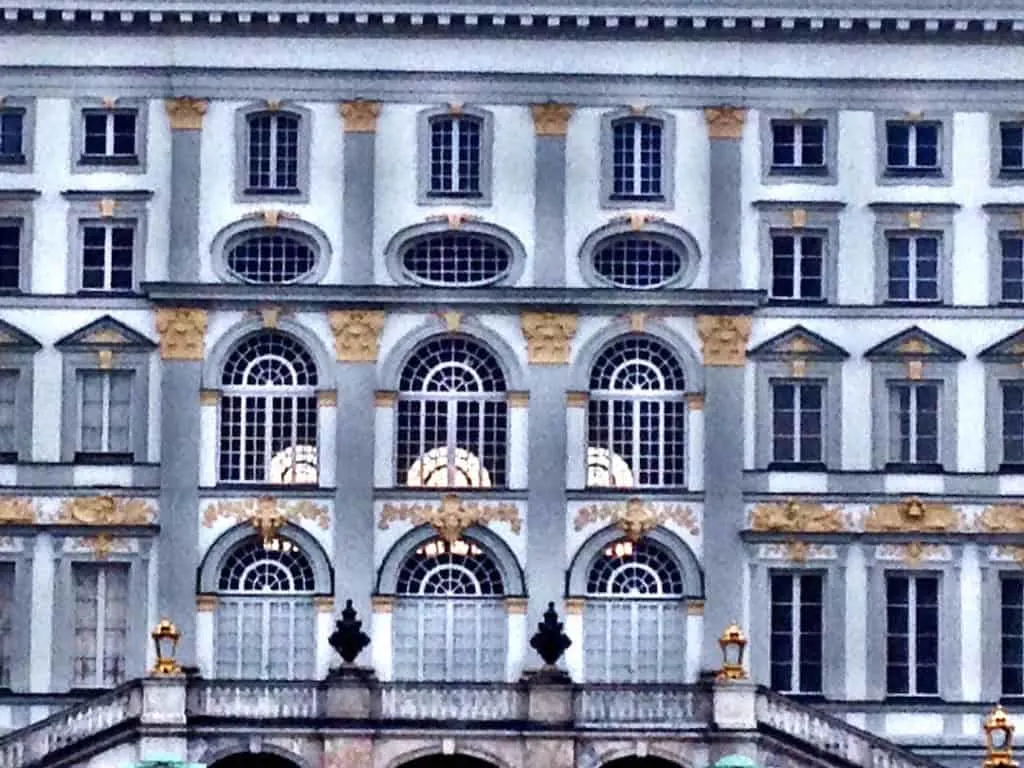
The forested garden has 490 acres, and originally was created in Italian style, and only later was transformed in the English style that you can see nowadays. – Gabor at Surfing the Planet
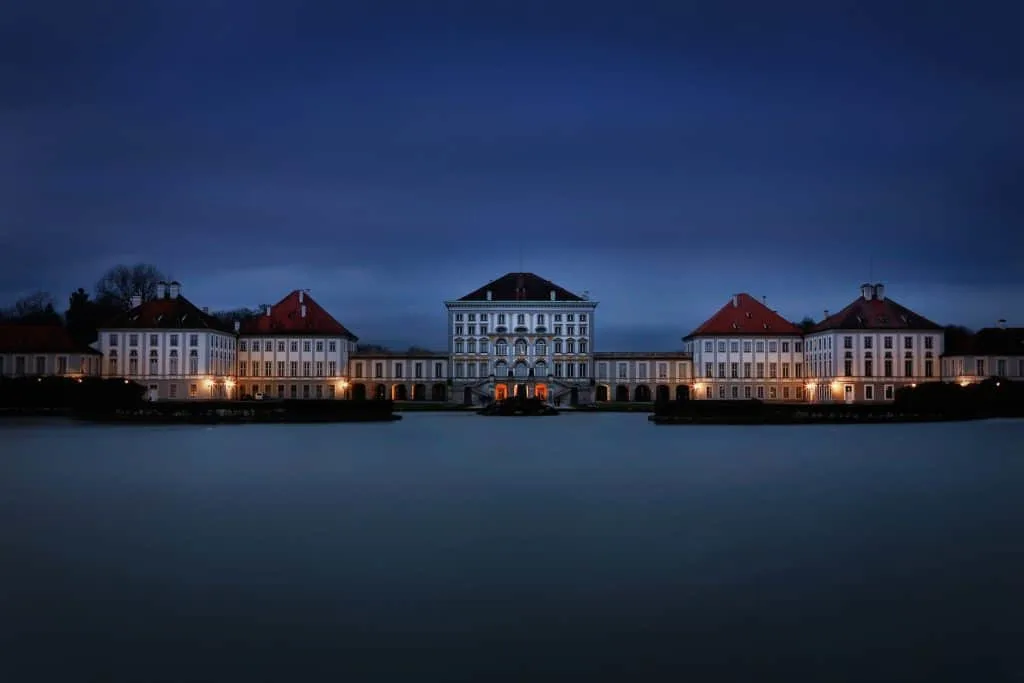
We often walked the dogs we were caring for in the early evening through the forested paths of Nymphenburg Park. It seemed like everyone in the neighborhood enjoyed doing the same. The Palace complex is a magnet for public events throughout the year.
Enjoy an Evening Concert at the Nymphenburg Palace – Enjoy a special concert of classical pieces in the Hubertus Hall of Nymphenburg Palace, performed by soloists with the Munich Philharmonic Orchestra. Click here for more information.
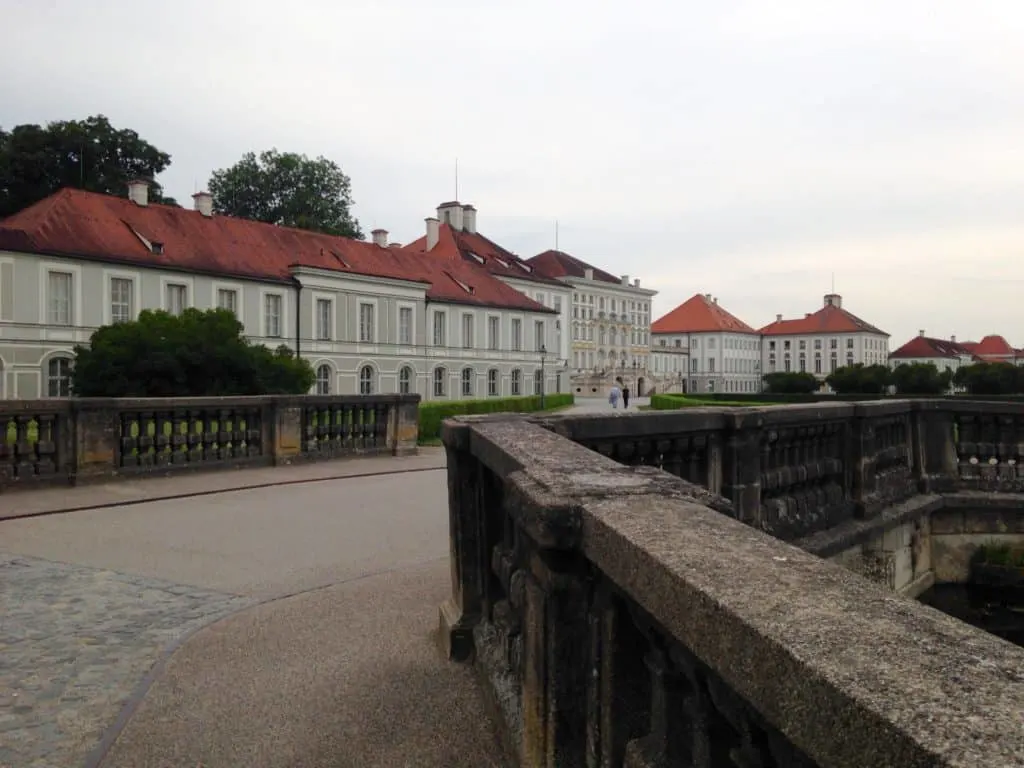
Tips: Don’t miss the amazing porcelain exhibits in the renowned Porzellanmanufaktr Nymphenburg wing of the palace complex. Opposite, behind the stable wing of the Palace (where the fascinating museum exhibits of the Royal Carriages are) is a residential wing for courtiers with apartments and townhouses. In there, you’ll find a charming little private garden.
It’s a lovely, private little place to have lunch or a romantic supper. Continue on to the back gate of the palace complex. Just outside is our favorite ice cream cafe, a good place to get a little something sweet to tide you over.
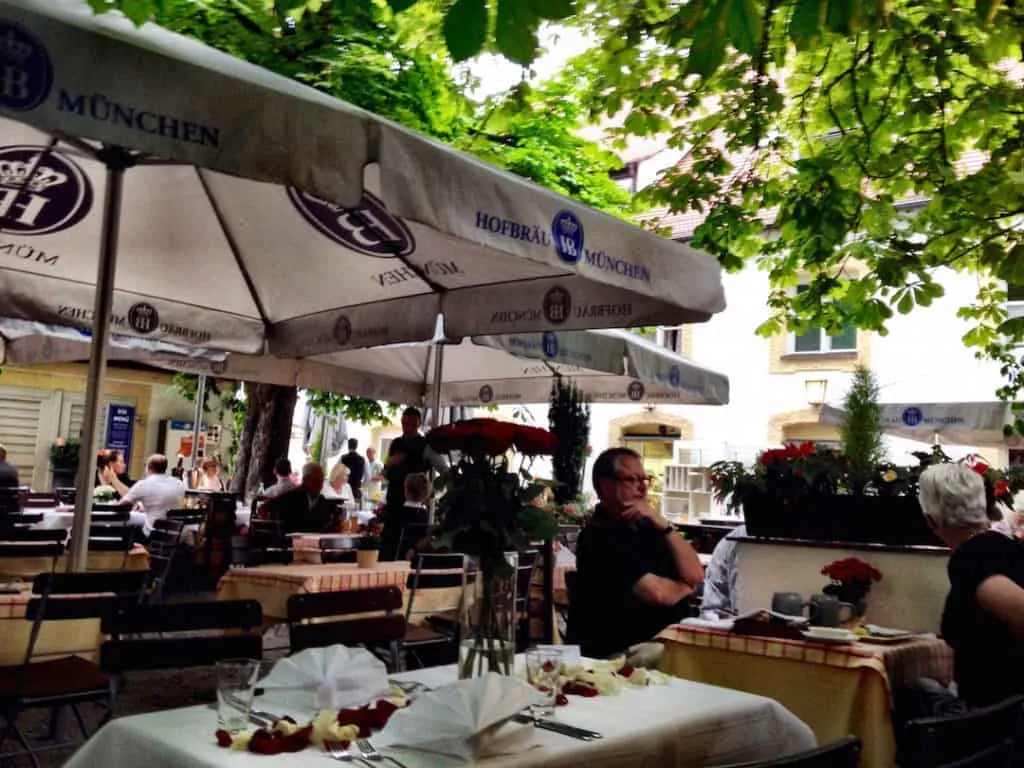
Best Places to Visit in Munich: Schwabing
From the Karlstor medieval city gate off Neuhauser Strasse near Marienplatz in Altstadt, hop on the Karlsplatz U-Bahn blue route to the Münchner Freiheit stop in Munich’s Schwabing neighborhood.
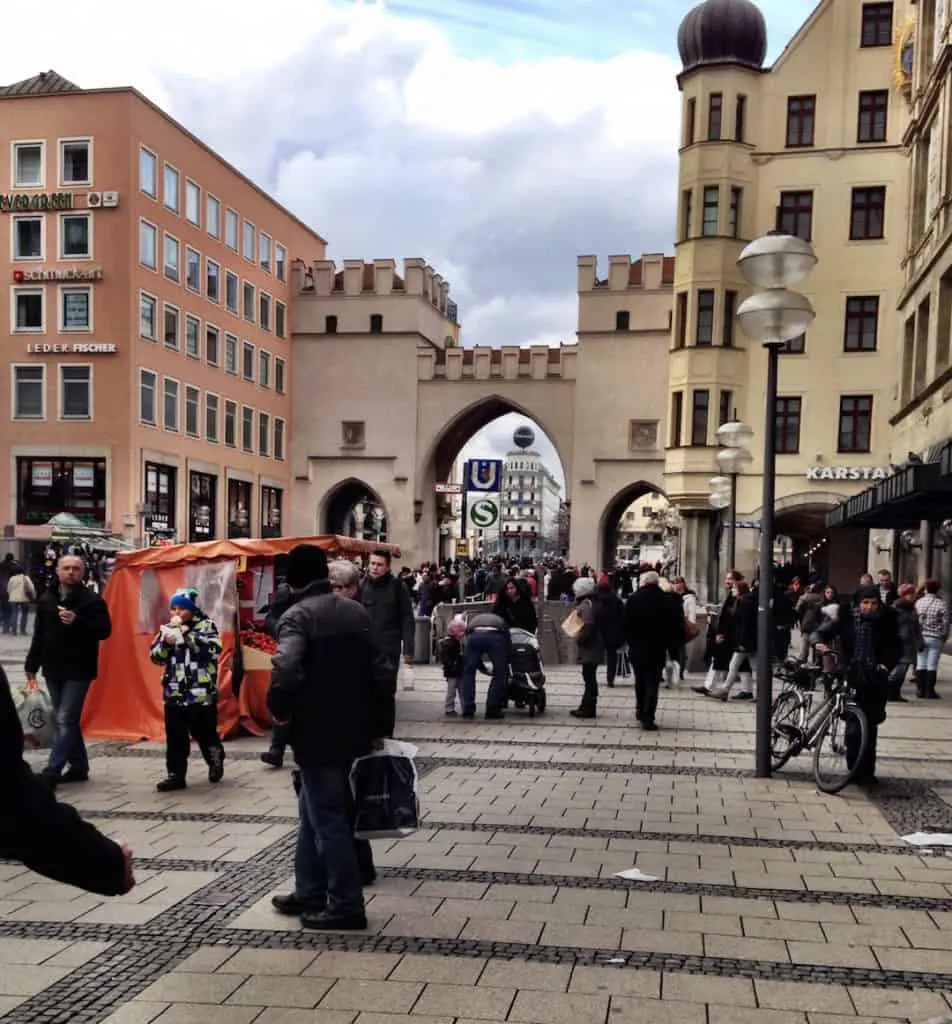
Schwabing has always had the reputation as a bohemian area for intellectuals, artists, and dissidents. Today, however, it is also one of the most expensive residential areas in the city.
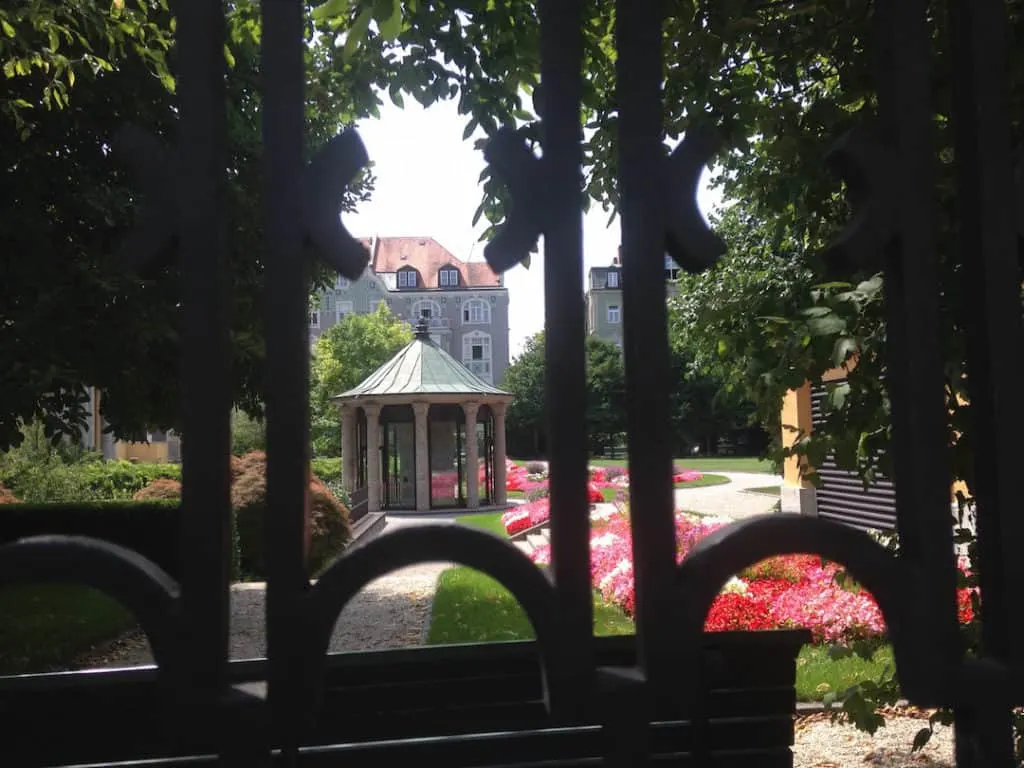
Freiheit Square – From Freiheit Square, a pleasant walk will provide you with the numerous examples of Jugendstil architecture – the German interpretation of art nouveau. The square is named for Resistance radio broadcasters from the WWII era.

Wirtshaus Zur Brez’n – Duck into this traditional restaurant for hale and hearty Bavarian fare: pretzels, wurst, and pork roast. Click here for reviews and more information.
Cafe Munchner Freiheit – More than coffee and cake, the pastry chef founder proffers outstanding specialty sweets. Sit outside in all weather with cozy sheepskins and blankets to ward off the chill. Click here for reviews and more information.

Englischer Garten and Englischer Garten Surfing – The Englischer Garten is Europe’s largest park, dating from 1789. Its beer garden adjacent to the Chinese pagoda is the second largest in Munich (after Hirschgarten). The park has other restaurants and a smaller beer garden as well.
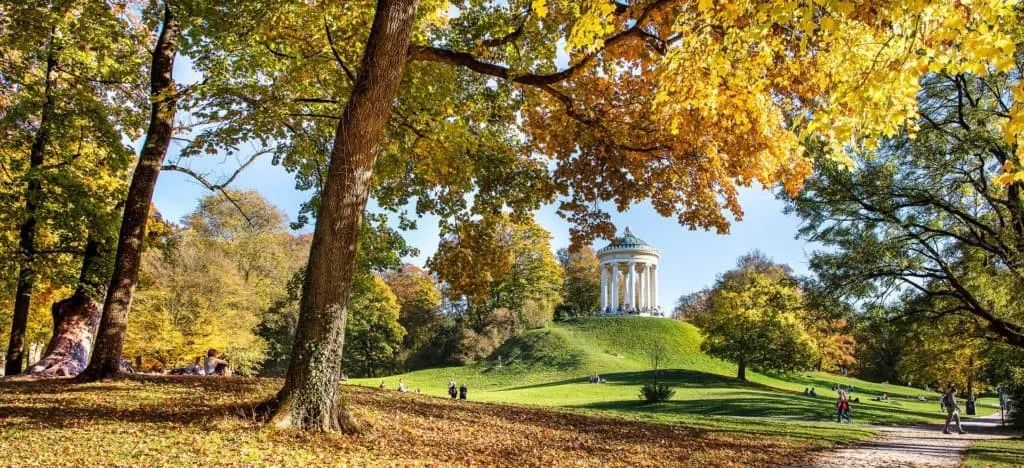
The magnificent Chinese pagoda beer garden is complete with an oompah band.
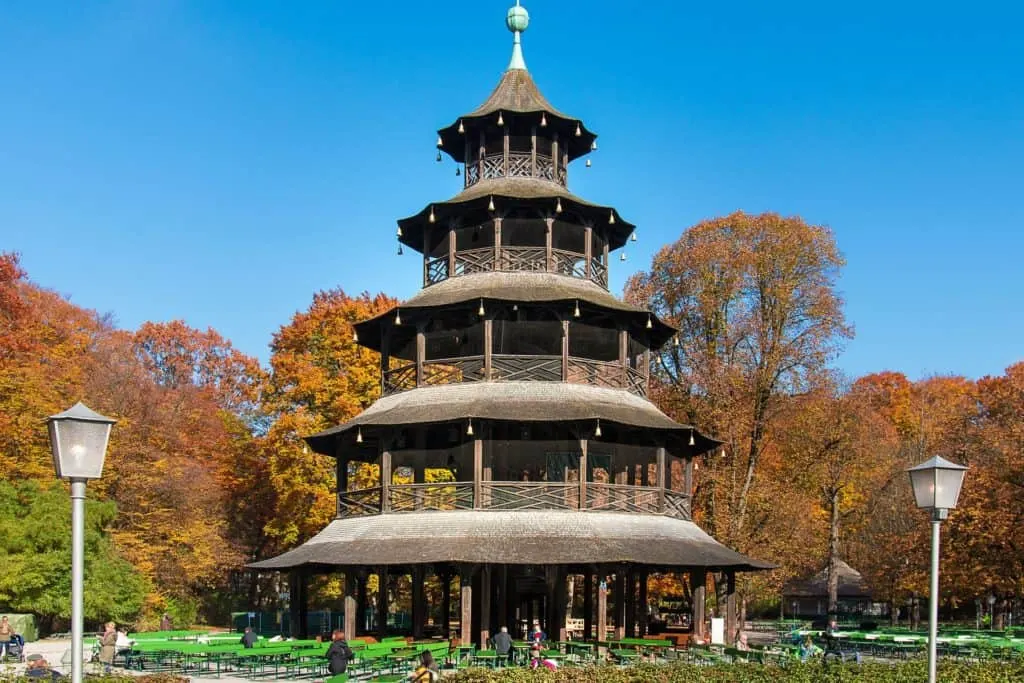
Looking for unusual things to do in Munich? Well, grab your board, or your camera, because surf’s up!
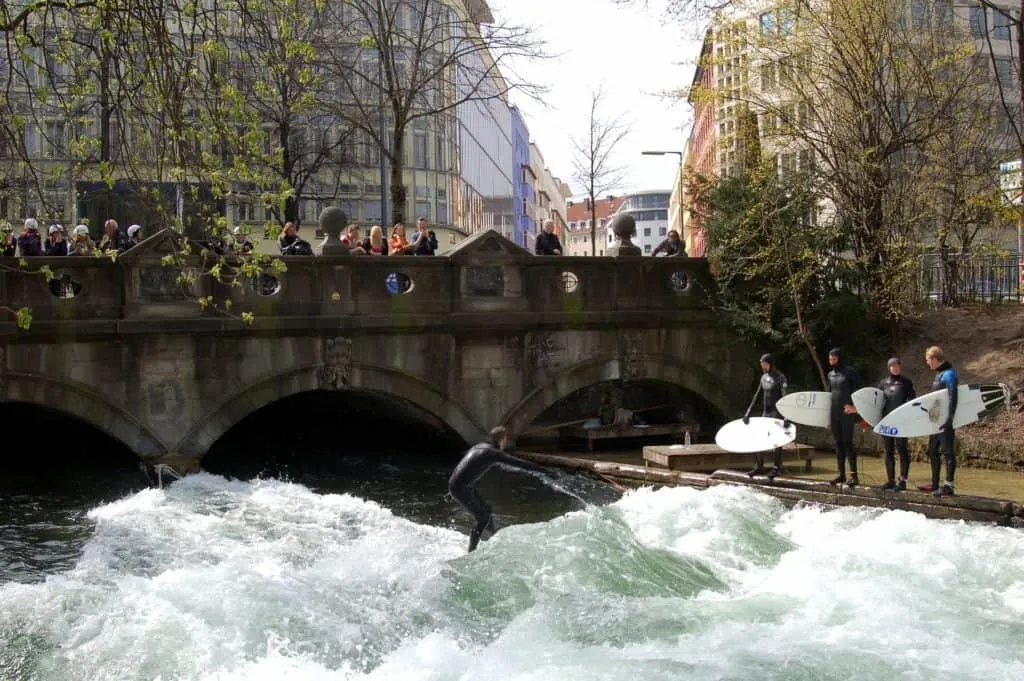
Seriously, surfing probably isn’t the first thing that comes to mind when you think of an inland metropolis like Munich. But the city is home to an excellent river surfing spot (it’s just one break, but it’s a good one!). To find it, head to the Eisbachwelle rapids in the English Garden: you can find the spot just east of the Haus der Kunst art museum.
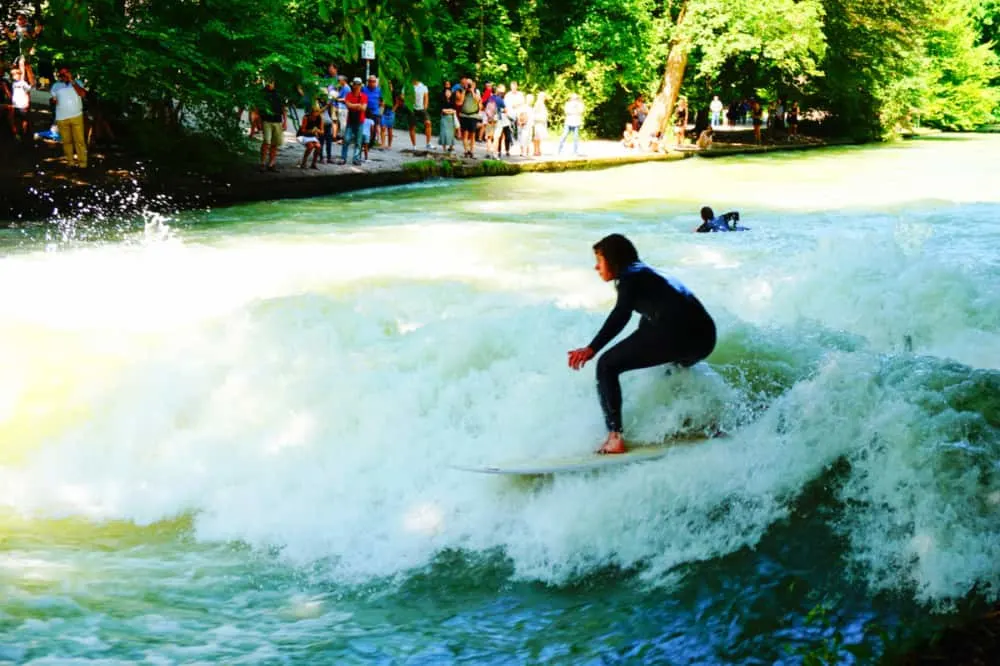
It was actually illegal to surf here until just a few years ago, and unless you are an expert surfer, you’ll probably want to stick to spectating. But just seeing surfer after surfer try this challenging wave in the middle of the city is one of the best things to do in Munich. You can even find a few brave souls giving it a go in the middle of the winter! – Nate, Travel Lemming
Munich’s Darker History
Medieval Munich
Munich, of course, is more than just Oktoberfest and Bavarian beer halls. There’s a dark side to Munich dating back to the Middle Ages and culminating in the horrors of the Nazi era.
Bavaria has a complex history, but has been under the rule of the Wittelsbach royal family dynasty from 1180 to 1918. It has been the capital of united Bavaria since 1506, with royalty a leading influence on politics, education and the arts.
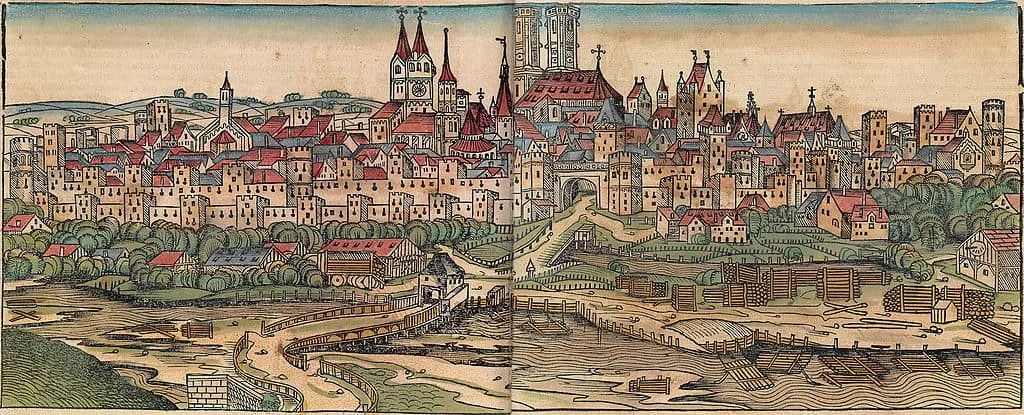
Munich has also been under intermittent Hapsburg and Swedish control. In the 17th century, one-third of the city’s inhabitants were killed by bubonic plague. With all this history, legendary stories convey the mysterious and macabre.
Discover the Dark Side of Medieval Munich
Munich: Illuminati & Other Secret Societies Trail – The medieval Knights Templar, Rosicrucians and other secret, occult societies had a presence in medieval Munich, and counted Wittelsbach royalty among their members. Tour specific sites in old Munich where their symbolic messages can still be discerned. Click here for additional information.
20th Century Third Reich
During one of the darkest periods of the 20th century, the Nazi Third Reich came to power in Munich. While the city was virtually destroyed during WWII, many of the locations which figure prominently in the rise of Adolf Hitler and the Nazi movement can be visited today.
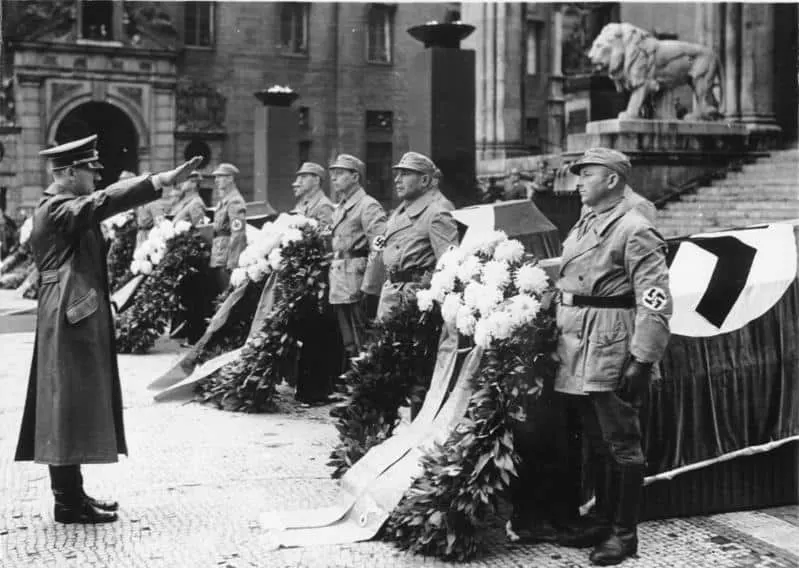
Munich Documentation Center for the History of National Socialism – Situated on the site of the former Nazi headquarters, the Documentation Center is within sight of the Konigsplatz, where Nazi rallies were held. It has been open to the public since 2015. Click here for more information.
Munich Third Reich Tour – Explore the world of Adolf Hitler and trace his rise to power in the city with a knowledgeable guide. Visit the places that played a role in the growth of the Nazi party. Click here for more information.
White Rose Monument – Located in front of the Ludwig Maximilian University, this simple abstract installation in the brick street memorializes a student group which distributed leaflets and called for active resistance to the Nazi regime. Click here for more information on the monument.
Eagle’s Nest Full-Day Tour from Munich – Visit Hitler’s private mountain stronghold and the NS Documentation Center in alpine Berchtesgaden. Click here for more information.
Dachau – A visit to Munich isn’t complete without going to Dachau Concentration Camp memorial site. You may be thinking this isn’t the most fun place to go, but it is a site to learn about an important period in our history. Travel is about having fun and taking in beautiful sceneries, but it is also a way of getting to know each other better and understand our humanity… the good, the bad, and the astonishing evil. Here, you’ll see the latter.

Dachau memorial camp is 30 km from the center of Munich, you can reach the camp by train from Munich (S2 train). Or opt to go with an organized tour from Munich. The memorial camp is free, you only have to pay 3 € for parking if you go by car. The camp is open from 9h to 17h, and we advise you to do one of the official tours at 11h or 13h. The tour takes about 2h with a German guide that gives you the perspective of how people lived in the camp.
Although Dachau is a place with a heavy history, you’ll learn a lot. With time people tend to forget how awful things can become, and how inhuman we can be. Dachau and Nazi Germany weren’t a unique phenomenon in mankind’s history. – Jorge and Claudia, Travel Drafts
Organized Tours of Dachau
From Munich: Dachau Concentration Camp Tour in English – Opened less than two months after Hitler took power, Dachau was Germany’s first concentration camp. A 5 hour tour with an experienced guide. Click here for more information.
Dachau Memorial Site: Full-Day (5 Hours) Tour – You’ll spend the day with a certified guide who provides detailed commentary on all aspects of the camp experience. Click here for more information.
Please note: due to the graphic nature of the information and exhibits, these tours are not suitable for children under the age of 13.
Best Day Trips from Munich: Places to Visit Near Munich You Shouldn’t Miss
Possenhofen – Empress Sisi Museum and Schloss at Starnberger See. Elisabeth, the beloved Bavarian Princess who became Empress of Austria, loved to vacation in this idyllic setting on the outskirts of Munich.
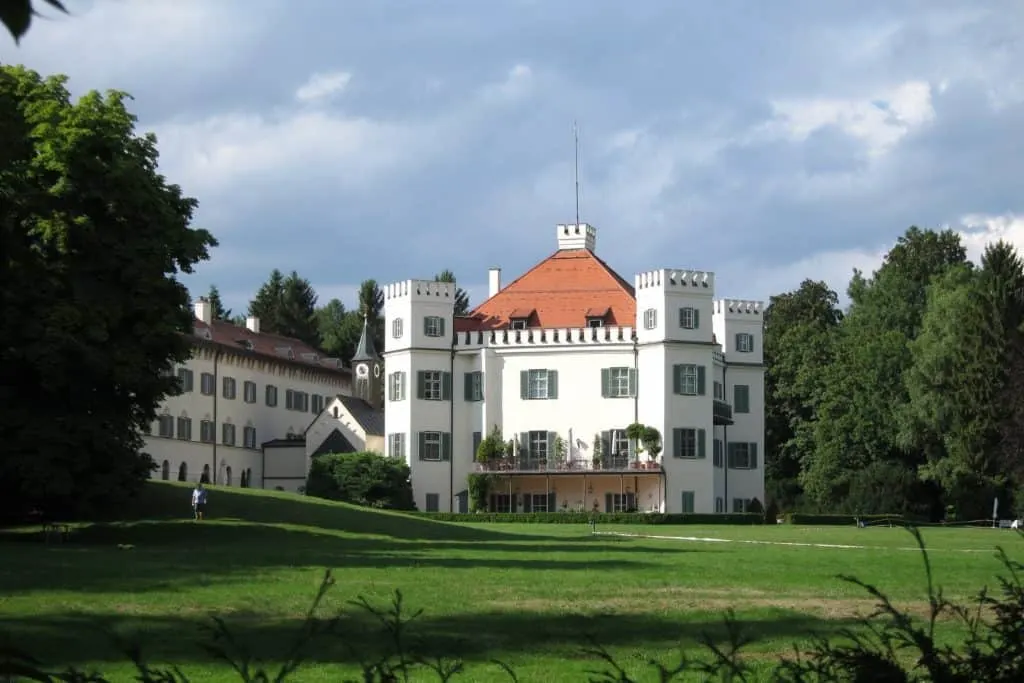
Fondly known as “Sisi” throughout the Empire, legend has it that she would meet her favorite cousin, King Ludwig II, here as well. Ludwig mysteriously died on an evening walk around Lake Starnberg in 1886.
Possenhofen is easily reached via the S-Bahn, Route S6 from Munich. Click here for a list of the 15 best things to do in Possenhofen.
Royal Water Music on the Starnberg Lake – Enjoy the beauty Princess Sisi loved so much to the strains of classical music performed in the luxurious salon of the MS Starnberg. Afterward, partake of a 3-course dinner and champagne reception on board. Click here for next available date and more information. Note: this activity sells out months in advance, considered one of the best day trips from Munich.
Garmisch – Garmisch-Partenkirchen is a beautiful Bavarian town. It’s one of the easiest Alpine day trips from Munich by train. Visit Garmisch-Partenkirchen to escape the big city for some hours and breathe some fresh air in the mountains. Or plan weekend trips from Munich to explore the area.
Garmisch and Partenkirchen were historically two different towns until Hitler decided to unite them for the Olympic Winter Games of Munich, in 1936. Garmisch-Partenkirchen has kept its 2 historical centers, both with cobbled streets, colorful architecture with beautiful frescoes on the facades and cute traditional shops.

Because Garmisch-Partenkirchen is surrounded by mountains, it is also a great place for hiking with the Zugspitze, the tallest mountain in Germany, located not far from the town.
During the winter, ski fans will find some of the best ski slopes in Germany and upscale facilities. People looking for a more relaxing day can head to the big spa, with sauna, massages and different pools and water games for all ages.
Finally, don’t leave Garmisch-Partenkirchen without tasting some of its Bavarian specialties, in one of its traditional restaurants. – Elisa from World in Paris
Full Day Tour to Germany’s Highest Peak: Zugspitze – includes transportation via air-conditioned coach, cable car and cogwheel train trip, bobsledding and experienced guide. Click here for more information.
Zugspitze – Standing at 2,962 meters above sea level, the Zugspitze is Germany’s tallest peak. To get there from Munich requires a one and a half hour train ride to the charming town of Garmisch-Partenkirchen. The Zugspitze can be accessed either by traveling via cable car or a combo of cable car and cog-wheel train up the mountainside. There is a plateau, the Zugspitzplatt, which is located halfway up the mountain and features Germany’s highest church and a handful of eateries.
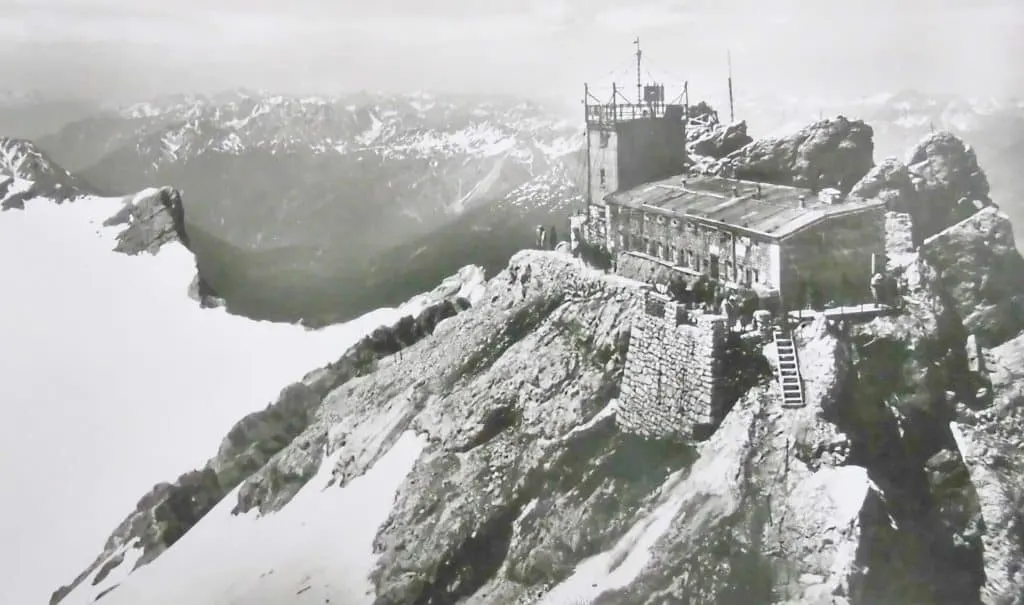
The Zugspitzplatt also has a permanent snow-field with little sleds that you can ride on for free! From there, taking a cable car to the mountain’s peak, you will find another restaurant, a beer hall, and a viewing area where you can even cross the border into Austria. The views from Zugspitze are stunning – especially when taken in over a beer & a tasty cup of soup.
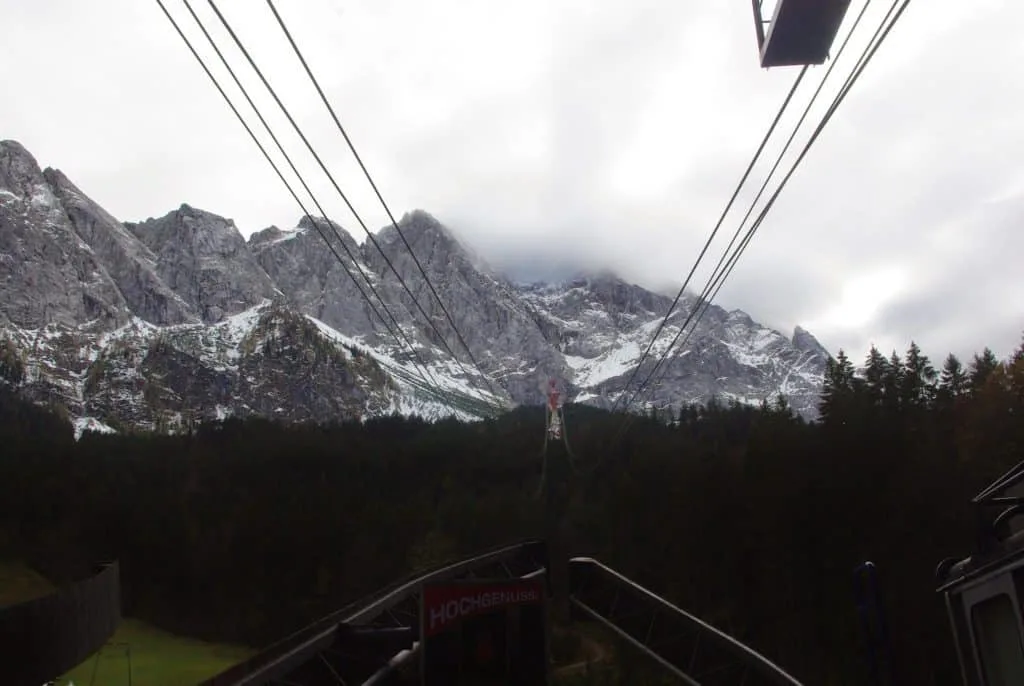
Later, if you take the Eibsee cable car back down, you will also be afforded amazing views of Lake Eibsee framed by the Alps. Day passes to the Zugspitze are 45 Euros per adult. – Savannah, Savvy Dispatches
Other Great Day Trips from Munich
Bavaria has some of the most beautiful scenery in Europe, and most of the best things to do around Munich will take advantage of this.
Romantic Road and Rothenburg from Munich – One of the most interesting places near Munich is Rothenburg ob der Tauber, a walled medieval city preserved in its entirety where people live and work today. Rothenburg is reached via the famed Romantic Road, a medieval trade route that takes you through the legendary Black Forest, picturesque towns, and villages with castles and storybook scenery. Click here for tour information.
Königssee Full-Day Tour from Munich – Königsee is a deep, fjord-like lake located at a Jurassic rift in the mountains, which creates a unique echo sound effect. Includes land and water transportation. Click here for more information.
Day Tour to Berchtesgaden Foothills & Obersalzberg – Travel the German Alpine Way in a luxury tour bus for outstanding scenery and sweeping mountain views. Depending upon the season visit Eagle’s Nest or the famous salt mines. Click here for more information.
Day Trip to Neuschwanstein & Linderhof Castles from Munich – Neuschwanstein is one of the most popular places to visit near Munich, but it’s entirely possible to combine it with a visit to Linderhof Castle as well. While there are many Munich excursions to Neuschwanstein alone, visitors who are short on time may want to combine what might have been two day tours from Munich into this one. Click here for tour information.
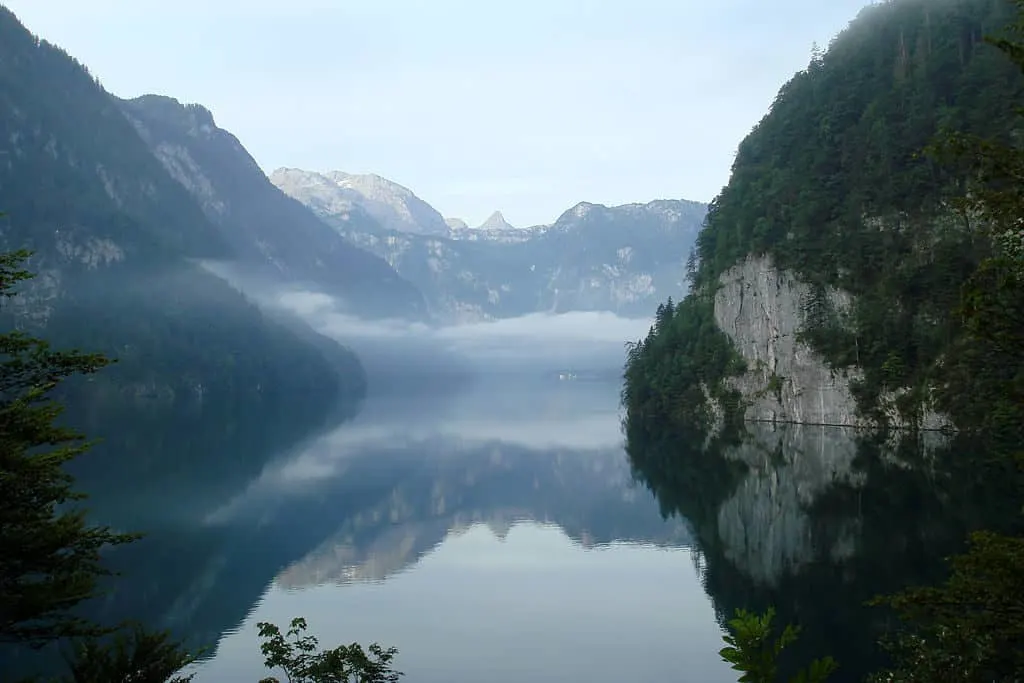
Shopping, Dining and Drinking in Munich: What to Plan For
Shopping in Munich is a delight for those with an appreciation for precise German design and production. What to buy in Munich? Look for impeccably tailored leather goods and clothing. Bavarian costumes for Oktoberfest will be authentic and well made. Crystal, timepieces, and ceramics are all good buys.
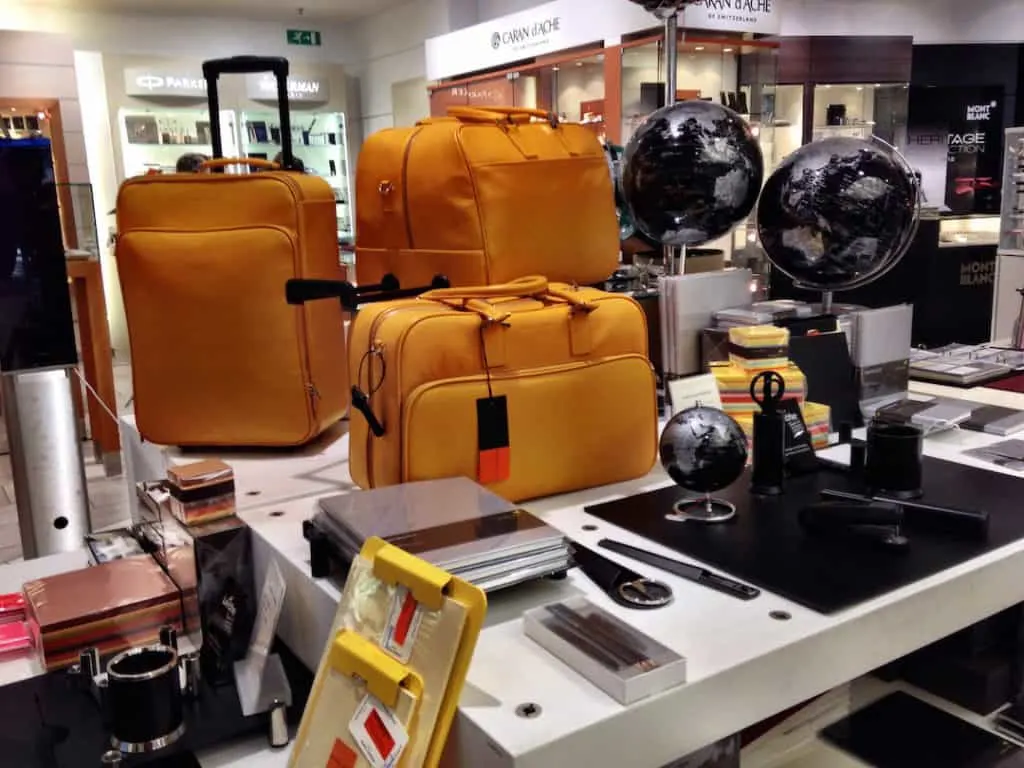
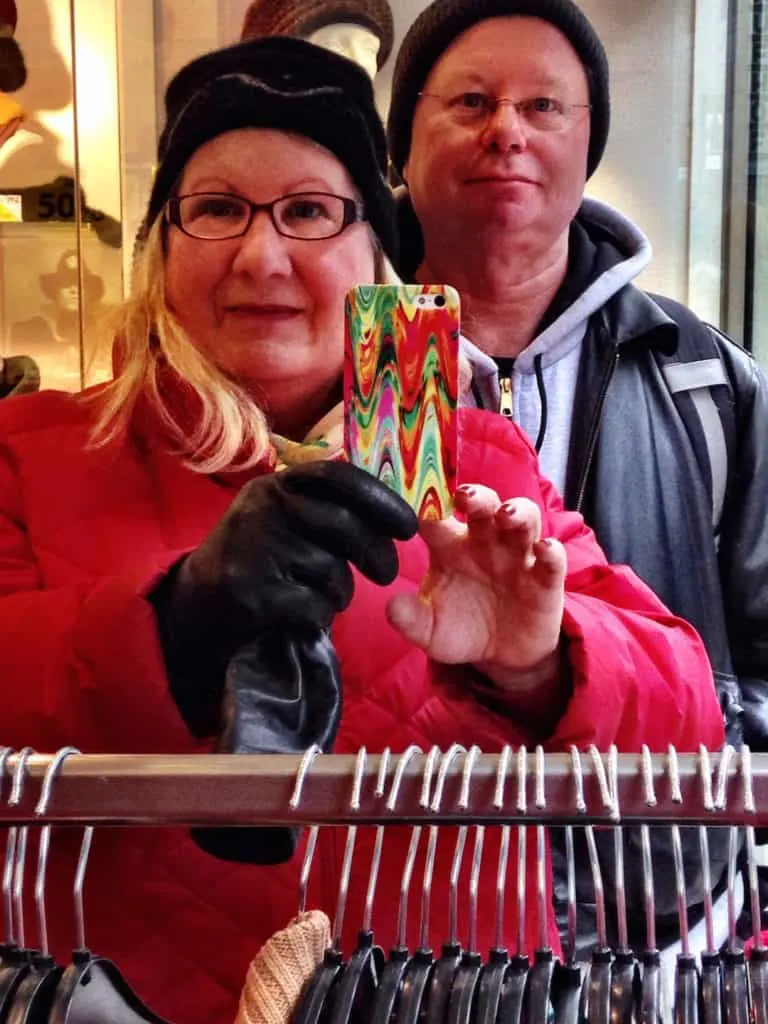

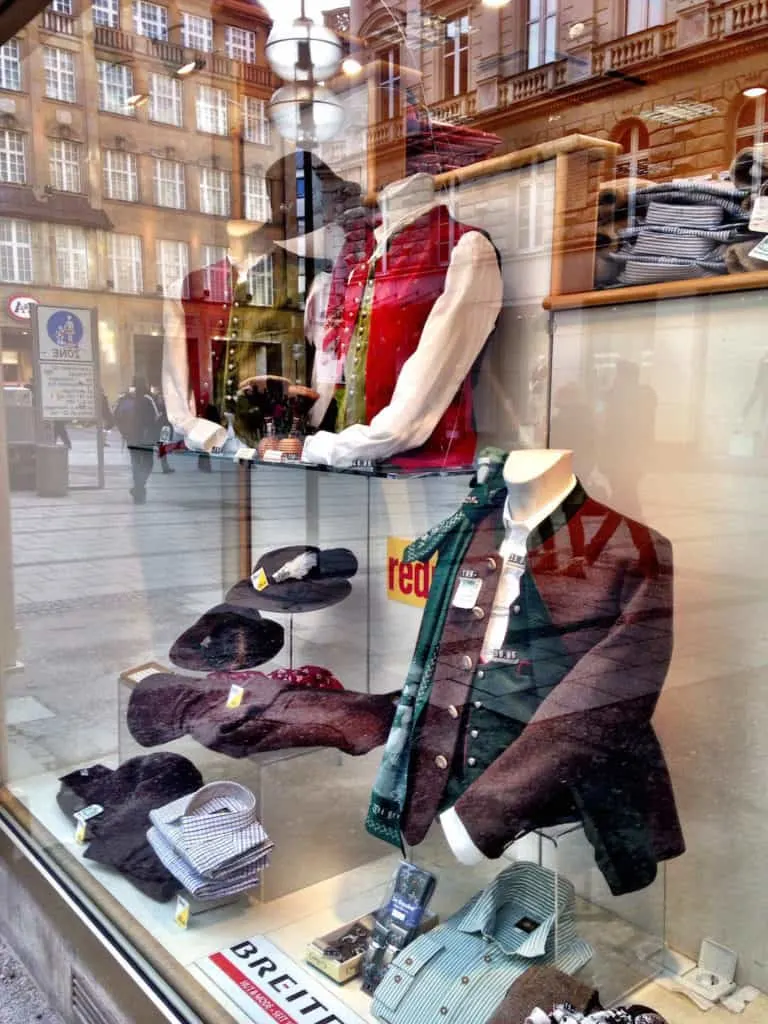
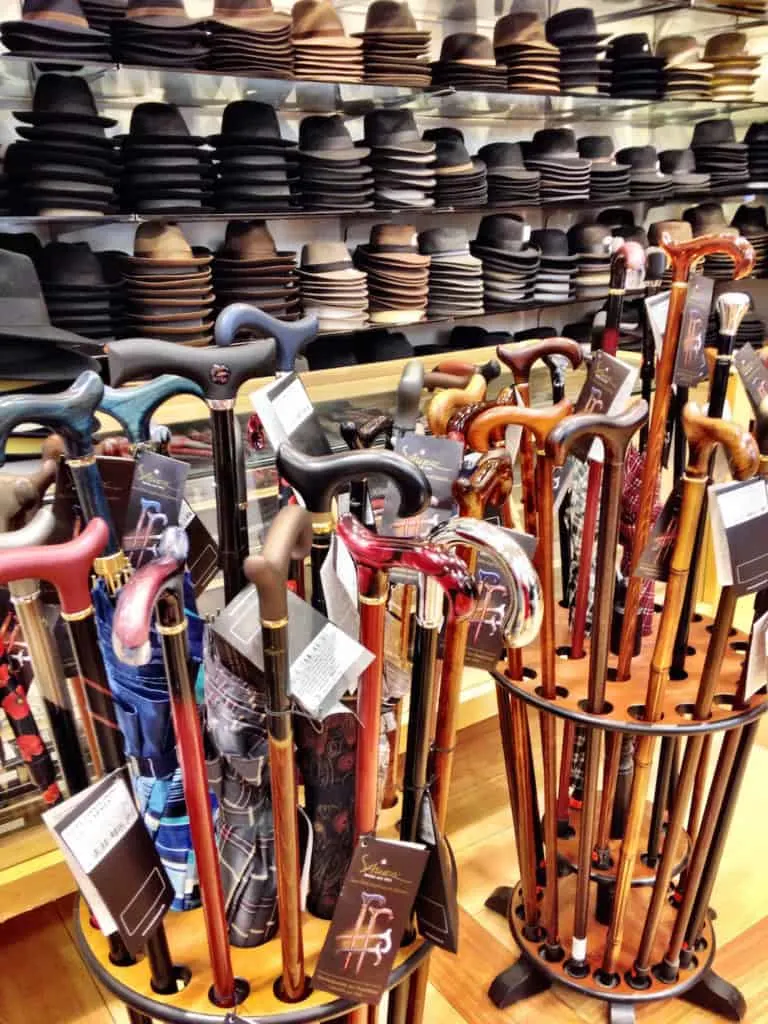

In downtown Munich, you’ll find international retailers in a compact walking district, nestled among some of the best places to eat in Munich. Of special interest for men’s haberdashery and its building’s historic architecture, Hirmer Stammhauses is a must.
If shopping is high on your list, combine it with a Munich beer hall experience. Typical German food will give you necessary sustenance, and the Munich food scene goes hand in hand with shopping experiences.
Munich’s Beer Halls and Breweries: 3-Hour Guided Tour – A sightseeing tour to several traditional beer halls including the oldest brewery in Munich, along with a visit to the famous Hofbrauhaus. Beer included! Click here for more information.
Where to Stay in Munich
Places to stay in Munich, Germany can run the gamut. Visitors to Oktoberfest, for example, can even choose to stay in tents! For first timers, we think the best area to stay in Munich if you’re looking to visit the main attractions is in one of the three districts we’ve concentrated on in this post.
Of the hotels near Munich Central Station (Munich Hauptbahnhof), our favorite is Le Meridien. It is just across the street and caters to business travelers, so the amenities are top notch. See our full review here. For a list of other hotels near Munich Hauptbahnhof, click here.
Close to Marienplatz, considered by some the best place to stay in Munich, hotels will be block or two’s walk away. Click here for a list of Munich hotels near Marienplatz. These are some of the top hotels in Munich, and as you might expect, Munich hotels downtown can tend to be pricey.
However, if you’re willing to walk a few blocks from Marienplatz and still be in the Altstadt area, you’ll find options for some of the best hotels in Munich. Germany is renowned for a high service standard; to check ratings and prices for hotels in Altstadt, click here.
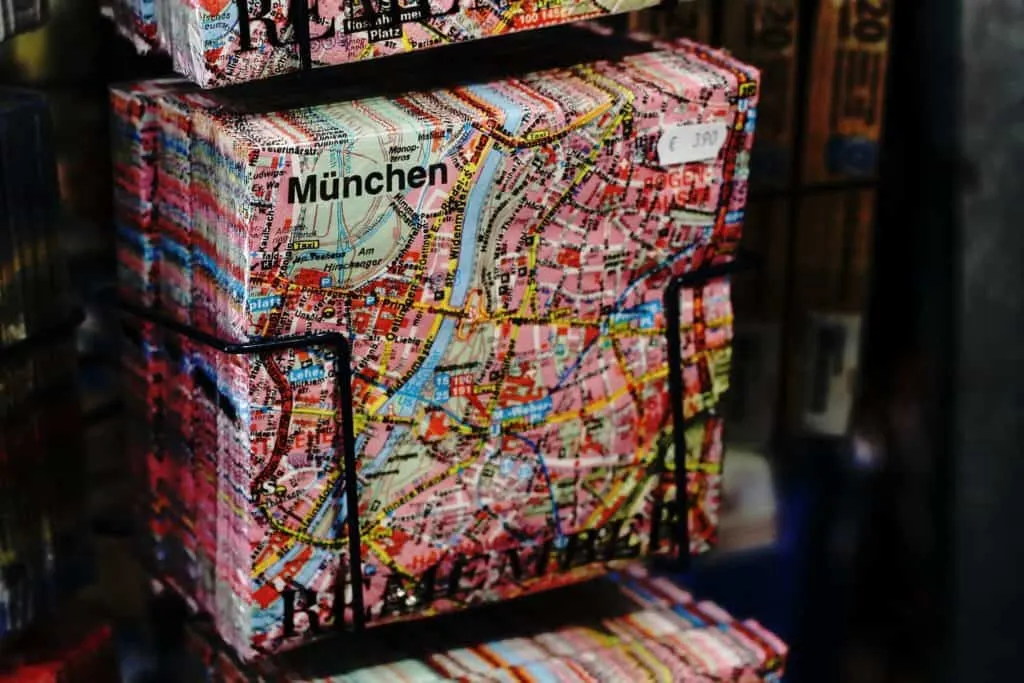
The best place to stay in Munich is one you can afford! Consider staying in an outlying area and using public transportation to get around rather than pay a premium for hotels in central Munich if you’re on a budget. Other top hotels, including brands familiar to Americans, can be found throughout the city. In Munich, where to stay might be a decision best made considering proximity to transport stations or tram stops.
For budget travelers, one of the best places to stay in Munich is Olympiapark. Here is a list of hotels near Olympiapark with affordable options. In Munich, family hotels are often budget friendly options. Look for room configurations designed to sleep more than two.
Wherever you decide, rest assured there is a wealth of hotels in Munich. Germany is one of the easiest places for first time visitors in Europe. You won’t have to worry about only speaking English and high quality amenities will be the standard.
Holidays and Seasonal Events in Munich You’ll Want to Plan Around
Oktoberfest
You may laugh at the thought of other reasons to attend Oktoberfest than beer, but there really are! You can, for example, enjoy tons of great foods like giant pretzels, wild oxen, chicken, and sausages. It is a two-week festival that lets you drink, dance and eat to your heart’s content.
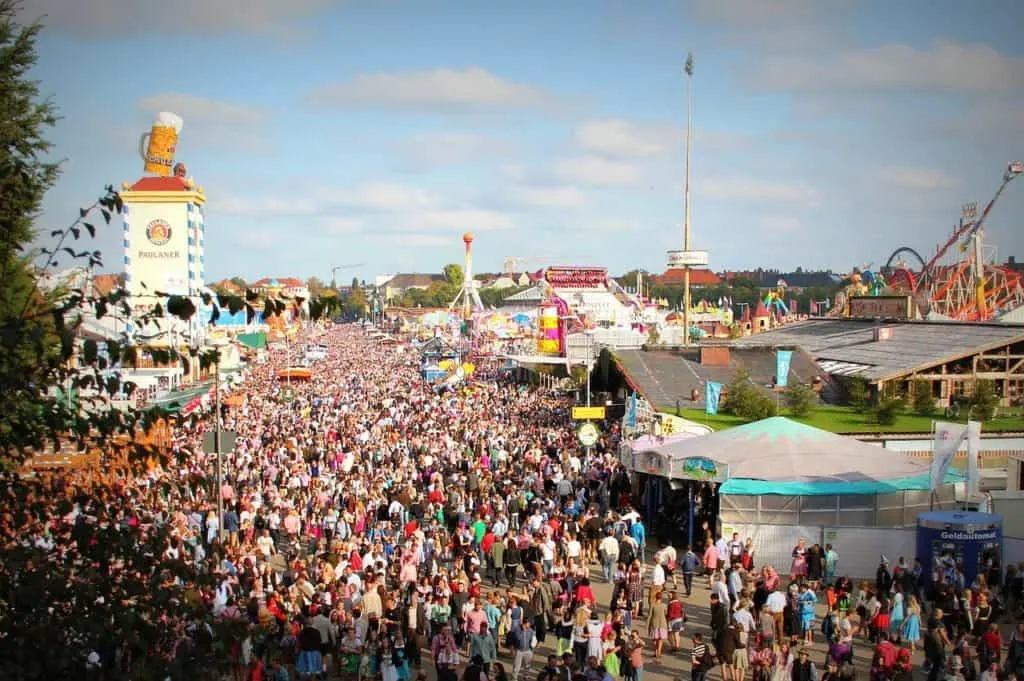
You can enjoy the traditional Bavarian wear sported by hardcore members of the festival or take in the amazing costumes that others put together. You can get there simply by taking a short tram ride from Munich city center! You can enjoy a grand parade, loaded with costumes and music.
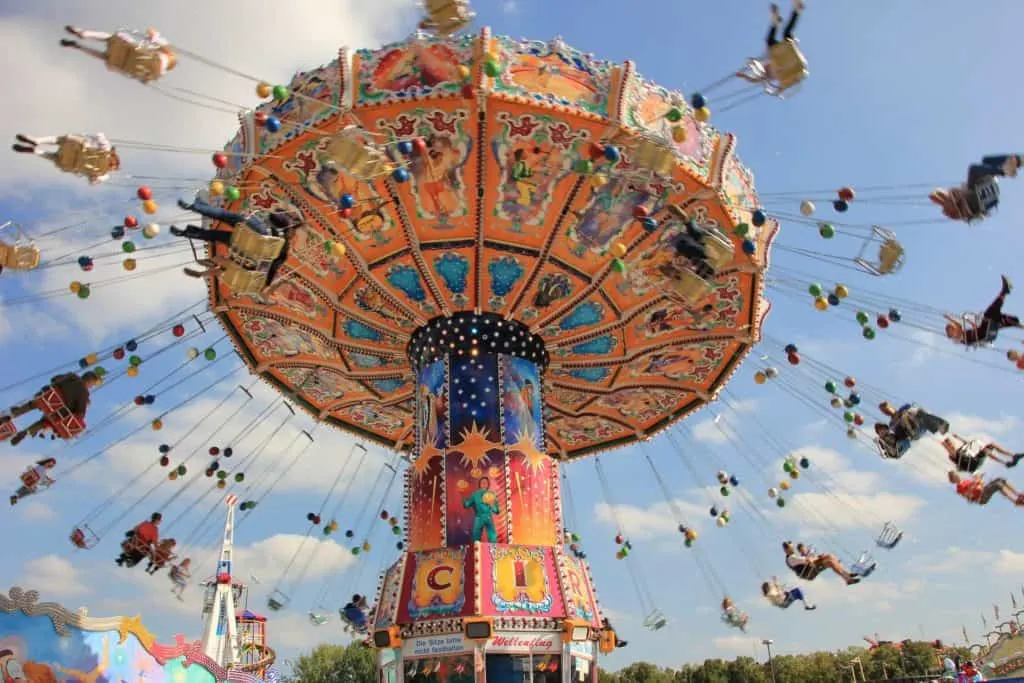
The tents are worth going into-not only will you stay cool but there is enough room for all to move, with some holding up to 10,000 festival goers. The hours are 10:30 AM to 10:30 PM, so you can start early and have fun. – Kaila, Nomlist
Tip: Oktoberfest routinely brings more than two million visitors to Munich, and it can be overwhelming for attendees. Consult our Oktoberfest First Timers Guide for the detailed lowdown on Munich’s most popular attraction!
Things to Do in Munich in Winter
Christkindlmarkt
Spend your holiday in Munich when it is at its sparkliest between late November and Christmas Eve. Head to Marienplatz for the Christkindlmarkt, the biggest and most atmospheric of the city’s festive markets. Arrive as it’s getting dark to wonder at the fairytale Christmas tree, and long lines of stands so aglow you could warm your hands on them. (You might need to – it can get very cold.)
Hang around for the advent music, performed at 5.30 p.m. each evening from the balcony of the Town Hall. At the stalls in Neuhauser Strasse, you can buy everything from a wise man to a sheep in the manger market. Or add gifts for the three Magi to your ever extending Christmas list.
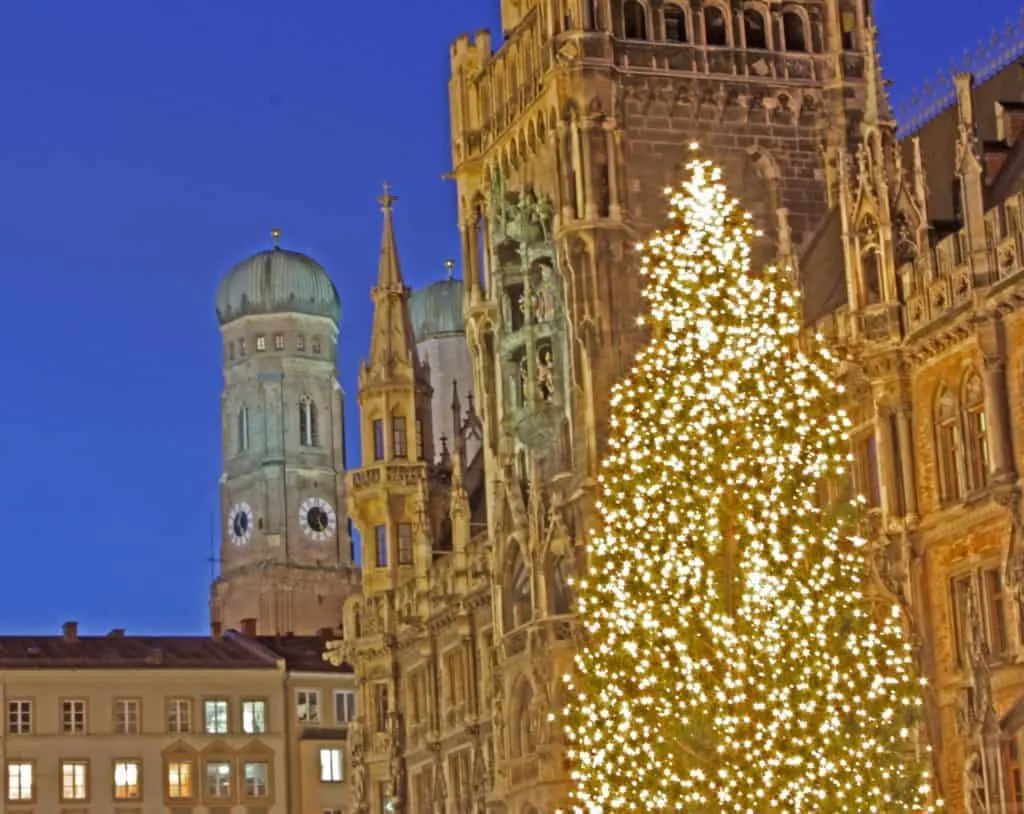
Munich markets are famous for its delicate glassware and it’s fun to pick out a bauble from the stalls for your own tree. Make sure you try some traditional lebkuchen gingerbread and snack on bratwurst before heading to one of the smaller markets scattered around the city centre to soak up the Munich holidays alternative vibe, like the LGBT community market that comes wrapped with a pretty pink bow. Well it is Christmas!

If you are in town more than a day, Wintertollwood is a huge market and festival in the Oktoberfest grounds that successfuly evokes the spirit of Christmas. Not those spirits -oh go on then, mine’s a Glühwein… – Kirstie from Family Adventure Project
Tip: For a listing of all the Christmas Markets in Munich with dates and locations, click here.
Christmas Tram
One of the most fun things to do in Munich in December is to ride the Christmas tram through Altstadt, complete with mulled wine and Christmas treats. Click here for more information.
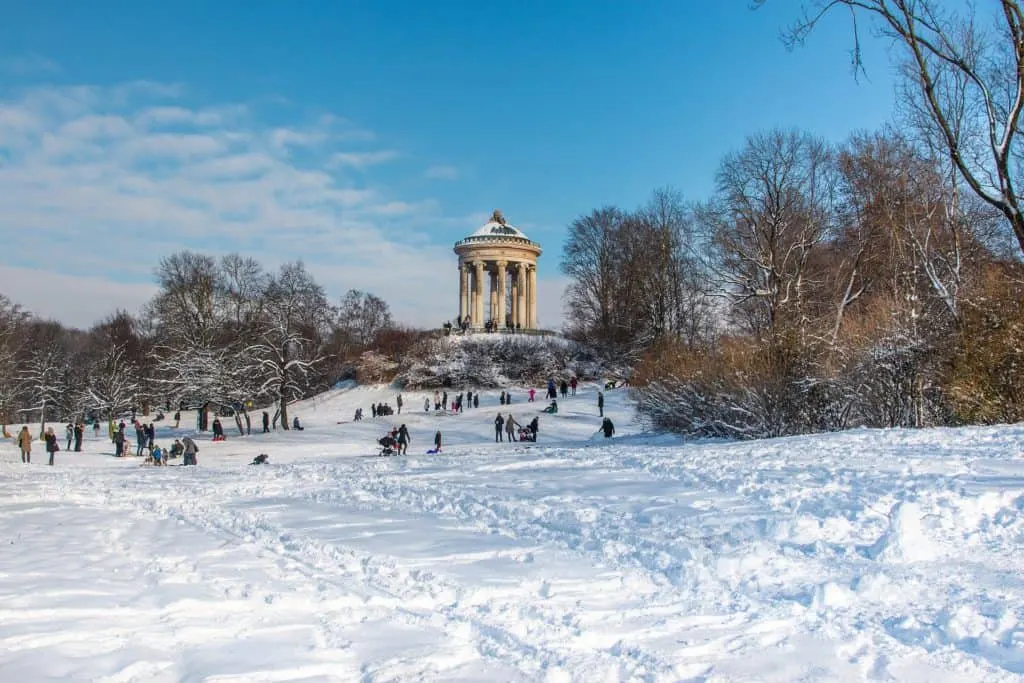
Skating and Curling at Nymphenburg
The shallow Nymphenburg Palace canal is transformed into a lengthy curling track during the winter months. If you’re trying to decide what to do in Munich on Sunday, a visit to the Palace complex for skating or curling, followed by hot liquid refreshments, might be just the thing!
Tip: Munich Tourism will always have updated listings of what’s on in Munich. Click here for an ongoing calendar of Munich activities, events and descriptions.
We hope you’ve found our Munich First Timers Guide helpful in making your plans to visit one of our favorite cities. Why not pin the following images on your Pinterest boards to keep the information handy?
Pinnable Images:
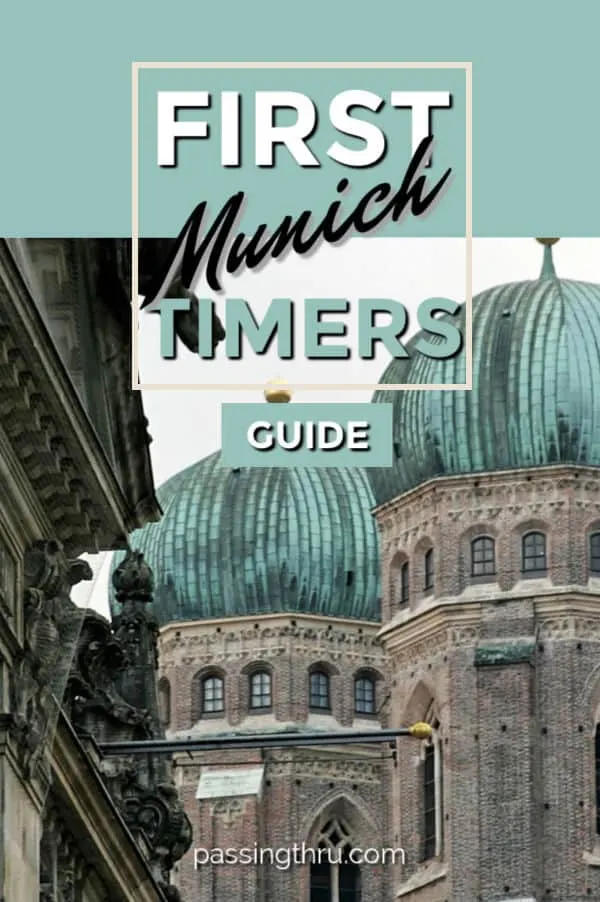
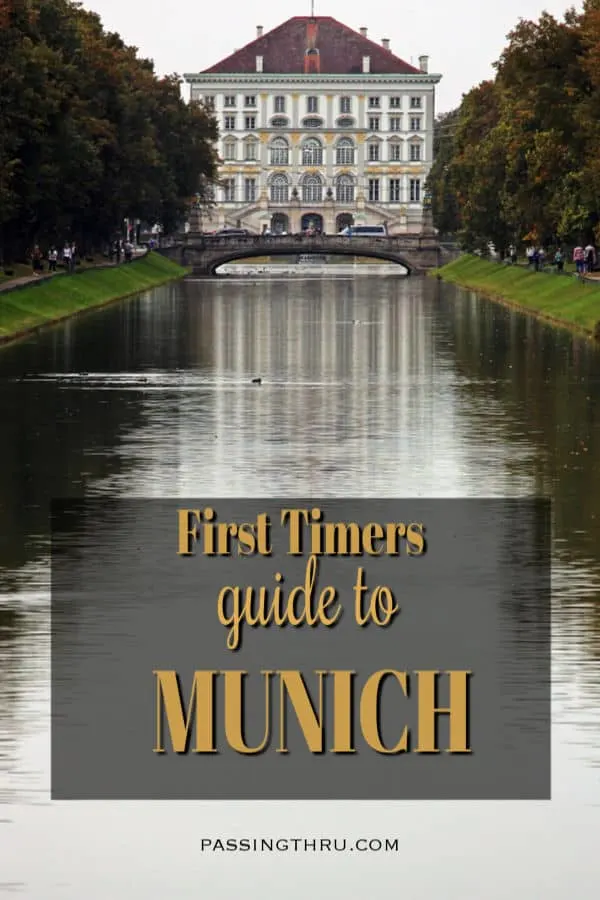
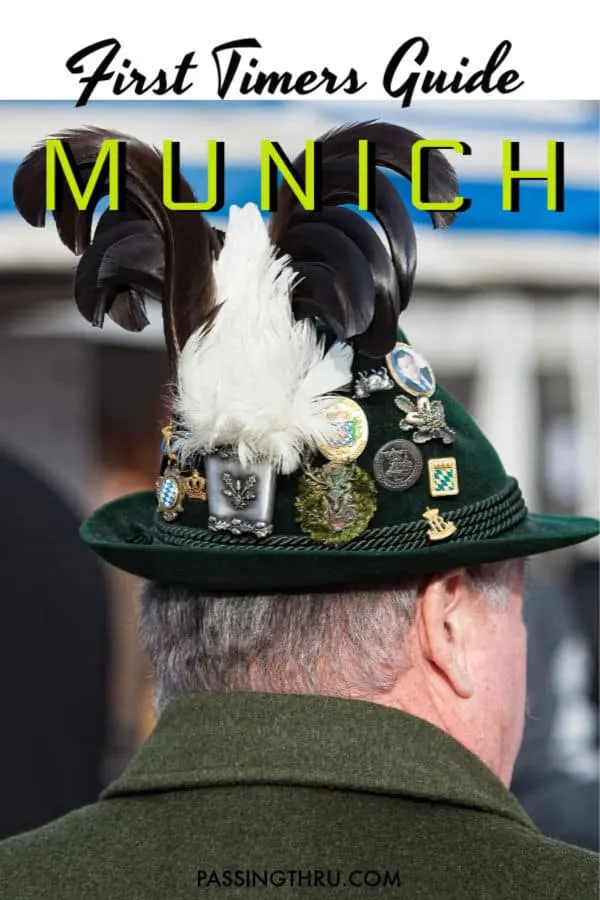
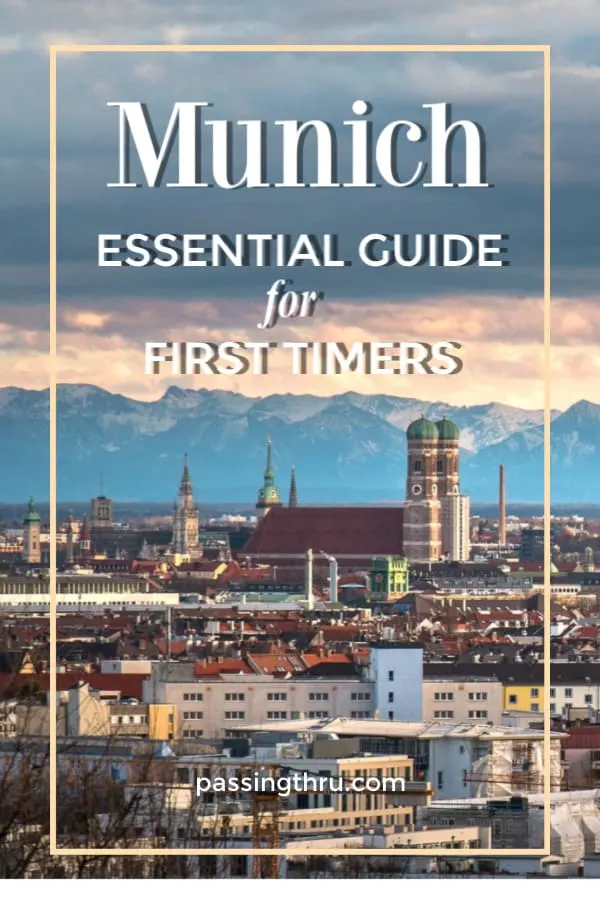
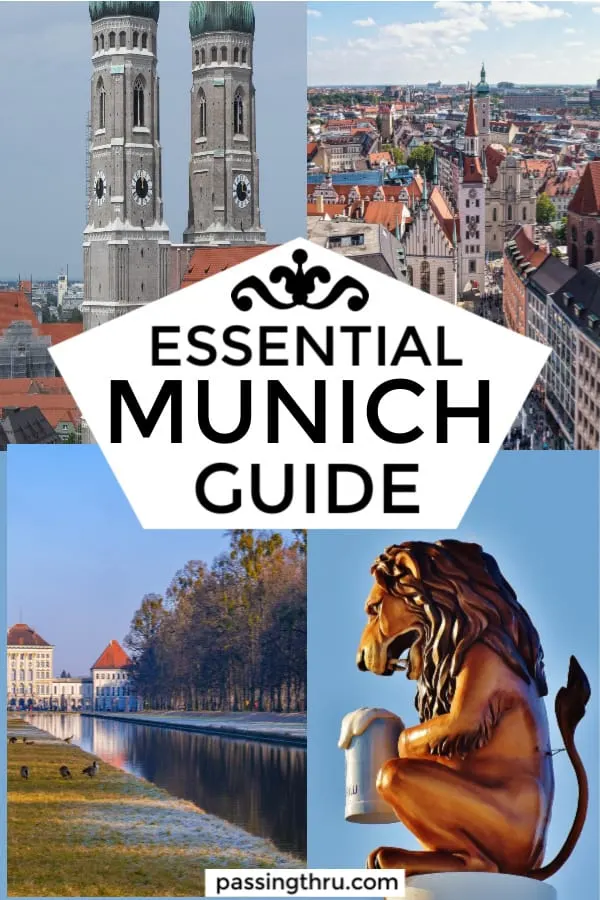
Tips for Trip Success
Book Your Flight
Find an inexpensive flight by using Kayak, a favorite of ours because it regularly returns less expensive flight options from a variety of airlines.
Book Your Hotel or Special Accommodation
We are big fans of Booking.com. We like their review system and photos. If we want to see more reviews and additional booking options, we go to Expedia.
You Need Travel Insurance!
Good travel insurance means having total peace of mind. Travel insurance protects you when your medical insurance often will not and better than what you get from your credit card. It will provide comprehensive coverage should you need medical treatment or return to the United States, compensation for trip interruption, baggage loss, and other situations.Find the Perfect Insurance Plan for Your Trip
PassingThru is a participant in the Amazon Services LLC Associates Program. As an Amazon Associate I earn from qualifying purchases.
To view PassingThru’s privacy policy, click here.

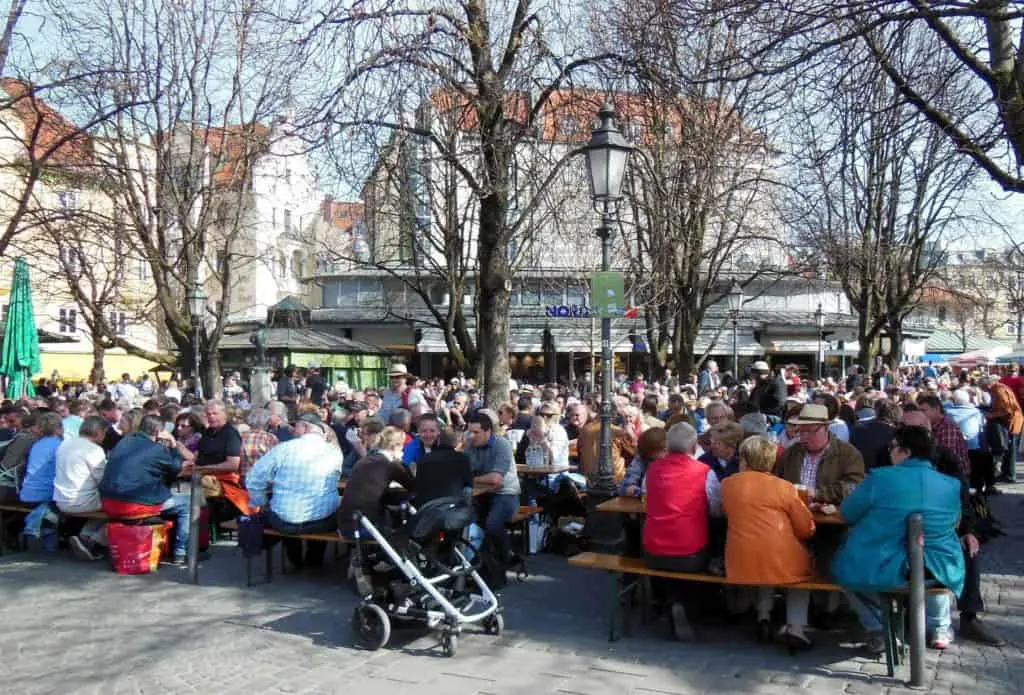
Henry @fotoeins
Friday 26th of October 2018
Nice extensive guide! It's also good to point out that from the Sundial Garden on the top of the Deutsches Museum, one can see on a clear day the Alps including Germany's highest peak, Zugspitze. Another great daytrip from Munich with the BOB train is to Tegernsee. On the darker side, Hitler called Munich "die Hauptstadt der Bewegung" or "the capital of the Nazi movement" by the 1930s.